We have been excited here at BooksfromScotland since we heard Louise Welsh was working on a sequel to her fabulous debut The Cutting Room. David Robinson finds that the follow-up, The Second Cut, has been well worth the wait.
The Second Cut
By Louise Welsh
Published by Canongate
Twenty years is a long time to wait for a sequel, but so completely does Louise Welsh’s The Second Cut shred the clichés of crime fiction, and so convincingly and freshly does it swathe Glasgow in her beyond-noir aesthetic, that it is well worth the wait.
Clichés (or rather, their absence) first. In most crime novels, the beginning is clear enough: there’s been a murder, the police are on the case, a corpse has been discovered and everything will spiral out from that. In The Second Cut, we have to read the whole novel to find out whether or not there’s been a murder, but either way the police aren’t particularly inclined to investigate, and what causes the plot to mesh into gear isn’t a crime so much as an attempt to tidy up a crime scene. (Don’t worry, I should add: there will be blood – although whose, where, how and whodunnit you probably won’t guess.)
One of these days a creative writing postgraduate – at some university other than Glasgow, where she has a professorship in the subject – will write a thesis on the avoidance of clichés in Louise Welsh’s fiction. This goes much deeper than plot, right into the heart of her art. If you doubt that, try searching for a cardboard cutout among the characters in her new novel. Or look at Rilke, her tall, thin, promiscuous gay auctioneer protagonist, and tell me who else is like that in crime fiction.
In spite of his name, Rilke seems to fit right into Glasgow. He knows the city’s history, the forgotten and hidden versions as well as the official one. He knows his own mind too, and there’s a Sherlockian certainty about his aesthetic and sexual tastes. He is also a great noticer of detail, which he has to be in order to remain at the centre of his auction house’s trading web.
Rilke’s job matters. Even back in The Cutting Room, he had been working at Bowery Auctions for twenty-five of his forty-three years, so it’s clearly the only job he’s ever had, and now he’s well into his fifties, that’s still the case. He won’t bend the rules on taking on antiques without provenance, tolerate laziness among the porters or take pre-emptive bids before an auction. But dealing with someone who has helped the firm, either in the past or the present, he’ll be altogether more lenient. So lenient, in fact, that he won’t worry too much about breaking the law.
And that’s where Jojo comes in, a drunk crashing a gay wedding at the Glasgow Arts Club en route to an orgy. Jojo is an embarrassment at the best of times, but is a useful source of tip-offs about antiques, like the one he gives to Rilke about an imminent country house clearance in Galloway. He invites Rilke to the orgy (he says no), hands him a bottle of what turns out to be a date rape drug, and heads off. He is found dead in a doorway in a lane off Ingram Street the following morning.
Plotwise, everything follows from three things in that last paragraph: the body, the bottle and the Galloway country house sale. But while the plot is feasible, immersive and engaging, it’s not the reason The Second Cut goes so deep into the reader’s mind. We follow Rilke for more than that. If, for example, in 2023 he were to auction off a duelling pistol that had been used in a murder, and in 2024 a faked treasure map sought after by criminals, we wouldn’t be so interested. That’s Lovejoy’s territory (John Grant’s 24-volume series, televised in the Eighties and Nineties and starring Ian MacShane as an antique dealer and forger) not Welsh’s, and the serial crime novel’s annual adventure is just another of the cliches she is avoiding. A decade ago, in an interview (Dead Sharp, by Len Wanner, Two Ravens Press) she admitted she was vaguely attracted by the idea of bringing Rilke back every ten years (as Patricia Highsmith did in four of her five Ripley novels) and that she would enjoy writing about a changing Glasgow from his point of view. Even so, she still held back for a further decade.
Glasgow has altered enormously in those twenty years. That Glasgow Arts Club gathering, at which a panto dame in oyster satin and ostrich feathers shushes the crowd as the two grooms cut the cake, is a sign of the times. Gay men can legally marry, no longer fear the police the way they used to, and their lives have become more convenient and danger-free. Fancy sex with a stranger to fill in that dead half hour before a meeting? Grindr was invented for this very purpose, and Rilke – ‘a serial shagger’, according to Jojo – takes full advantage of it. Except now, age is starting to catch up with him: strangers he calls on are just as likely to look him up and down and say ‘No I don’t think so’ before shutting the door.
There is so much to enjoy in this novel – the assurance of its descriptions of post-Covid Glasgow, Rilke’s lonely panache, the nuances of sexual politics, the dry, high-quality bants – but what’s irresistible about The Second Cut is the way in which Welsh manages to get all of this up and running at the same time. There’s one scene I’m thinking of in particular. It’s not pivotal, not given any big authorial bravura build-up, just five characters in a van driving from one part of Glasgow to another. Yet when I finished reading it, I realised that I’d never read anything like it.
Rilke is at the wheel, and Les – a transvestite of similar vintage (‘he looked like Nureyev might have, if he had survived HIV and given in to the occasional fish supper’) – is in the passenger seat. Les has summoned Rilke and Jojo’s lodger, an art student (who, it turns out, is painting key scenes in the book) to pick him up at George Square, where a demo against a visiting Terf (Trans Exclusionary Radical Feminist) is in full swing. Because there’s a counter-demo, a full range of culture war banners are being waved. In the crowd, Les has met two pretty boys (they might be girls; he’s not sure) who want to score some dope off him. He calls them femboys, and Midwich Cuckoos, but one of them takes exception to this and points out that she does, actually, have a vagina. Later on, we’ll find out that they identify as gender-queer. ‘Good for you,’ says Les. ‘I identify as a tranny.’ ‘You should have a better opinion of yourself,’ one of them tells him.
Shorn of all the abstractions of gender politics, here are some of their nuances in the flesh. And not just nuances: Welsh takes us to the edge of the cultural Grand Canyon that is the debates over trans rights – skilfully sketching in her characters’ views on the issue without overbalancing the story. In these divisive times, that’s a feat in itself.
So those five non-heteros in the van (a rarer sight than is should be in crime fiction) leave the anti-Terf demo (even rarer) behind and head off up the Great Western Road, as classical music fan Les (another cliche bites the dust) switches over to Radio 3 to drown out his talk with Rilke about date rape drugs. Outside:
‘Deliveroo couriers were waiting outside fast food shops. A band was uploading their gear from a taxi outside the Pint and Hug. A young boy sat on a scrap of cardboard on the street, watching them …’
And there you have it. A Glasgow I know and a gay subculture Glasgow I don’t. And, between hardback covers, a plausible, atmospheric, and completely engaging guide to both. It’s only January, but the bar for this year’s William McIlvanney prize is intimidatingly high already.
The Second Cut by Louise Welsh is published by Canongate, priced £14.99.
We have been looking forward to reading Andrés N. Ordorica’s debut ever since we featured him in our ‘Introducing’ feature back in 2020. We’re delighted to share some of his poems from his wonderful collection, At Least This I Know.
Poems taken from At Least This I Know
By Andrés N. Ordorica
Published by 404 Ink
At least this I know
They say the sun never set upon the British Empire,
I do not know if that is true.
But I hear it spread from ocean to ocean,
from green seas to waters blue.
They say that once a man flew around the world in
Eighty Days,
I do not know if that is true.
But I hear he did it in a hot air balloon,
wind guiding him from one country to the next.
They say Alexander conquered the world at quite a
young age,
I do not know if that is true.
But I hear all were under his rule,
from the Adriatic to Syria, Babylon to India.
I hear there is a place in a land far away
where chimney houses guard children from danger,
where fairies live near them and hide too,
I do not know if that is true.
They say that the New World is so varied and vast,
in one day, you can go from snow-capped hills to
great plains
where lakes are so wide, they spill into the horizon,
but again, I do not know if that is true.
They say there is a land with a beautiful rising sun,
creeping over a most holy mountain,
with hues of reds and oranges painting the sky,
a fiery phoenix ascending from ashen ground.
Who knows if any of this is true?
They say that while you are sleeping,
in a far-off land someone is waking,
that the sun sets in the West and rises in the East,
the moon pulls the ocean and causes waves to crash.
I do not know if this is true, but what I do know is…
My father once held my dreams in his hands,
while anointing me with chrism in God’s name,
and although we don’t share the same language,
in my father’s eyes, I am loved.
At least this I know.
Things I want
I want that freedom.
I want to be free, floating, and fierce.
I want to cut through like a machete, chopping down the
bamboo that surrounds me.
I want to walk into a room and be seen.
I want to see all things that represent me.
I want to see every shade and find solace in our
multitudes.
I want to soar high above and look down on this world
and find belonging.
I want to give comfort, receive comfort, comfortably exist
in the centre of it all.
I want to not have to think, not always question.
I want that freedom.
I want to swim far and wide.
I want to be a fish and swim safely in the sea.
I want to be caught in your net.
I want you to hoist me up, savour me: your catch.
I want to be gutted, filleted, and served on a platter for
your consumption.
I want to be free and wild and angry.
I want to be soft and hard and par-boiled.
I want you to eat me.
Now.
We are young and still have time
- Heat on skin as the sun bores down
on wood varnished by sticky sweet cider.
Air smelling of spring, summer in the distance,
I smile at you while soaking up the promise of a day.
2. We walk side by side along the gallery wall
with its monochrome photos of distant cities.
We say how we will go there someday,
and we believe it because we are young.
3. Coorying in among the dim candlelight,
pressed up against the foggy glass alcove.
Seasons changing, the patio a distant memory,
we laugh about this as we toast the year.
4. Friday night, I wait for you on the steps,
ten minutes to go until the band starts up.
We’ve missed the preshow pint (no bother),
really, I just want your company in the dark.
5. Music blares from speakers stacked like Lego,
as strobe lights cast blue-violet filters on our skin.
The throng of revellers fall and rise against the stage,
the band they are like ministers preaching to the
masses.
- Over the bass and drum, I whisper, I love you
and through the snare, you mouth, I’m glad
we’re here.
All around us, the future feels bright and
never-ending.
We believe it because we are young and still
have time.
At Least This I Know by Andrés N. Ordorica is published by 404 Ink, priced £9.99.
As part of the Year of Scotland’s Stories, we will be running a series of Responses on BooksfromScotland, commissioning writers to respond to books from the Publishing Scotland membership, engaging with work in different ways. For January 2022, and our theme Afresh, Jess Brough, founder of Fringe of Colour, writes about Salena Godden’s debut novel Mrs Death Misses Death, published by Canongate.
Mrs Death Misses Death
By Salena Godden
Published by Canongate
Mrs Death Misses Death is, to me, the most original novel title of recent years. Even before opening the book to the first page, this wordplay led me to think of near-death experiences and intrusive thoughts, as if death sits on your shoulder and whispers ‘try me’.
In Salena Godden’s debut novel, Death can not only whisper, but can follow, accompany, guide and archive human life. Here, Death is ‘she’, and she is a ‘homeless black beggar-woman with knotty natty hair, broken back, walking ever so slow, slow, slow’. She shapeshifts throughout the novel, but Black womanhood remains in her various forms.
I wondered why she had to be a Black woman. We are given the explanation that ‘there is no human more invisible, more readily talked over, ignored, betrayed and easy to walk past’ and, indeed, many scholars of Black feminism, such as Gail Lewis and Jade Bentil, have pointed out a forced duality of Black womanhood – that is to be, on one hand, invisibilized. On the other, hypervisibility intrudes on Black womanhood, for instance through objectification, fetishization, dehumanisation and stereotyping. Death can be so like this – teetering on the cusp of forgettability, ignored with enough practice till it is staring you in the face, while simultaneously remaining in our thoughts and daily lives at all times. As Godden puts it, Death is ‘the words trapped on the bitten tongue’. The pairing of Death with Black womanhood may be, therefore, an acknowledgment of that duality.
Admittedly, I struggled with the framing of Mrs Death as female. Godden makes the point that Death is so often depicted as male – the tall, hooded frame of the scythe carrying Grim Reaper, Hades, various (but not all) media depictions of The Angel of Death, and so on. This is her rebuttal. I am always trying to see gender as irrelevant as possible and so, in my mind, Death does not need to be framed as female to contradict gendered expectations, because Death does not need gender to be personified.
However, ours is a society in which Black trans and cis women, particularly those from working class backgrounds or living in poverty, are so often forgotten in historical retellings of both life and achievement and loss and tragedy. This may be via police brutality (resulting in the ‘Say Her Name’ movement), contributions to knowledge and scientific discovery (intentionally, as scientists and researchers, or forcibly such as the enslaved victims of the torturous ‘father of gynaecology’ Dr J. Marion Sims, or the cells stolen from Henrietta Lacks) and as agents who have been erased from their importance to their community. Perhaps, then, it is a rejection of all of this to place a Black woman who is homeless front and centre at the heart of all life. What a grave undertaking for Mrs Death, to carry the whole world on her back.
Gender non-conformity comes through a different character – working class Londoner and writer Wolf Willeford, who is described with gender fluidity. This is something we understand was a struggle in their childhood, but fortunately does not appear to be weighing heavy on Wolf’s mind in adulthood (the clarity of their self is refreshing). It is Wolf’s role to transcribe and document Mrs Death’s experiences, which Godden gives to us in essay, discursive and poetic forms. It is up to the reader to discern the true relationship between the pair; how Wolf’s identity may be a part of Mrs Death and how gender is therefore implicated. There are hints in the shadows between dialogue that suggest they are of one mind, but we may also consider Wolf as a sort of Medium, with the ability to not only witness Death in human form but to communicate with her. This relationship, along with Godden’s critical analysis of human behaviour and even the publishing industry at one point, is what makes Mrs Death Misses Death playful, placing the novel between the fantastical realism of Wolf’s conversations with Mrs Death and the non-fictional accounts of real-life deaths, which include mentions of famous murders and dead artists.
Like so many writers, Wolf is a reflectionist. Throughout the novel, they detail their experience of losing their mother as a child in an apartment block fire reminiscent of the 2017 Grenfell tragedy – the refusal for these lost lives to be forgotten, ensuring they are memorialised through storytelling is something I appreciate from writers like Godden – and the impact this loss had on their later life. Wolf talks about how, since that day, ‘I was never really alone: I felt her beside me, like a sudden urge to step out in front of a speeding train, to die was a temptation, a desire, a compulsion’. It is a feeling that parallels those initial thoughts I had, of death on your shoulder, imagining dying beyond the abstract and visualising an action with the curiosity. We, the readers, are urged in turn to consider the beckoning towards death of survivors and of those who have lost loved ones to Death’s unflinching pull.
What will linger with me most is the section focused on Time. Here, Godden depicts a relationship between Life, Time and Death (Life and Time being other personified entities in the novel), forming something analogous to a love triangle. When people say ‘take your time’, I have always understood that to mean ‘take it slow’ – a suggestion or command to stop and think over whatever it is that you are doing, to avoid rushing in. When Mrs Death said it, I heard ‘take your time back’, and I felt she was imploring me to use my time for myself.
With Time written as a concrete noun, object or person, I considered how that makes Time transactional. In the last few weeks of 2021, I spent many hours thinking about how I have used, lost and even abused my time. Now, more than ever, I have this raging understanding that I do not want my time to belong to work, that it should not be owned by anyone other than myself, including belonging to malnourishing relationships. I want to feel the benefits of time, to reap the rewards of growing older and reflecting, and to dedicate my time to whatever will help me regard time, not as a chore or something to be endured, but as a measure of possibility. It is something that I can lend, but at the end of the day I want it back. I want to feel like my time belongs to me. Those are the days I feel the happiest, that is when I feel like I am doing life right.
Godden’s metaphors helped me conceptualise this. I realised that I must be the owner of my time because I am never not paying for it in the currency of my life, and there is no one else who can pay that debt for me. It does feel a little grim to think of time and life in relation to economics, but what I can be certain about is that my life is my life, just as my time is my time and my death is my death.
I don’t know if it is the human condition or if it is that we have been conditioned to view life as synonymous with productivity and with output, but that is certainly a common narrative. I have thought about what I would like to leave behind in this world before I die, and that had always been intrinsically tied to what I hoped to produce. Planning for that is not always possible – life is short, life is unexpected and unpredictable, life can end without warning. The intention to leave something behind is often physical – I want to leave something someone can touch, and something someone can think about – but what if it wasn’t?
The last couple of years have made me more aware of mortality than ever. And so, if we cannot plan to leave something behind, who we are, who we were, must be that thing. Can production be simply a bettering of the self? I am still working that out, but I am now inclined to think that what we leave behind must be time well spent.
Mrs Death Misses Death by Salena Godden is published by Canongate, priced £8.99.
The Year of Stories x Books from Scotland response strand was inspired by Fringe of Colour’s series, which you can read more of at fringeofcolour.co.uk.
Music has such a capacity to uplift, to inspire, to recognise, to connect, and Graeme Thomson’s latest book explores how the work of Simple Minds captures those possibilities. Here, in the introduction to Themes for Great Cities: A New History of Simple Minds, he ponders on the band’s legacy.
Extract taken from Themes for Great Cities: A New History of Simple Minds
By Graeme Thomson
Published by Constable
Some Promised Land
There is a much-quoted maxim usually attributed to the late Scottish writer, artist, activist and polymath Alasdair Gray: ‘Work as if you live in the early days of a better nation.’
It appears in Lanark, Gray’s remarkable modernist dystopian novel, published in 1981. Although it is often credited to him, Gray always made clear that he was paraphrasing from ‘Civil Elegies’, the 1972 poem by the Canadian writer Dennis Lee. The line has travelled. It has many uses. In the early days of the new millennium it was engraved on the outer wall of the Scottish Parliament in Edinburgh.
It has loftier affiliations, certainly – yet whenever I think of those words, I hear Simple Minds.
I hear the otherworldly pulse of ‘In Trance as Mission’, with its ‘holy backbeat’ and the hopscotch skip of the bassline, like a loved-up heart murmur, or a dog running on three legs, forever slipping off the pavement edge.
I hear the hot prowl of ‘Premonition’, padding like some rough beast over high ground, a crackle of bad vibes and dark disco thrills.
I hear the modernist primitivism of ‘This Fear of Gods’, at once an ancient ritualistic blues and a catechism beamed in from an uncertain future.
I hear the dizzying pre-rave euphoria of ‘Theme for Great Cities’, and the gossamer opening bars to ‘Hunter and the Hunted’, redolent somehow both of soft-focus snowfall and the ripple of heat haze playing over some far horizon.
These are the sounds of a newly independent creative democracy, still engaged in the process of imagining itself. Self-made, improvising the outlines of its borders, in thrall to the excitement of instinctive combustion, the thrill of exploration. Heaving the guy ropes and erecting the scaffolding around its civic structures.
This five-headed writing machine is eccentric, built from necessity, of varying competences, each part imperfectly locked into the other, leaving room for the accidental miracle, the magic of chance (sometimes chance is all there is). The standard definitions melt into invisibility. Time signatures slip. What sound is keyboard, what sound guitar? Verse or chorus? Is this even a song? Does it matter?
Hard to break it apart, but let’s try.
At the root, the bass work of Derek Forbes, one of the great British musicians. A man who plays with the dexterity and invention of someone who, ideally, would like to have more strings – and perhaps a couple more fingers – at his disposal, but who also values the art of simplicity, repetition, mood, motion. Any German band of the 1970s would have been fortunate to have had Forbes. Praise scarcely comes any higher.
Locked to Forbes, the powerful tracking trance beat of Brian McGee, selfless in his pursuit of a rippling lucidity, a calibrated surge and swell. A percussive drummer who understands the allure of the glitterball as keenly as the relentless rhythm of the night train, McGee turns the key on the motorik engine.
If Forbes and McGee lay down the foundations, Mick MacNeil and Charlie Burchill paint in the colour and melody, providing shape, creasing the unyielding rhythmic line.
Burchill trades in immaculate understatement. Subtle, soulful, cerebral, a guitar hero in mufti, a sound-shaper and song servant willing to do whatever is necessary in order to make the thing work. Often you don’t quite know if he’s there or not. Often his aim is for the guitar not to sound like a guitar. Just occasionally, because he can, he unleashes a lightning strike.
The impeccable Mick MacNeil, the future’s dream of a classicist, introduces subtly insistent melodies, ambiguous textures on the keyboard. He is an avatar of good taste, an engineer in sound, shunning faux-orchestral bombast for spare formalism. The results are forensic yet instinctive, a relentless exploration of possibilities.
In the thick of it all I hear Jim Kerr’s voice, an open channel between the music and the swirl of moods and emotions it throws up. I see his words as snatched Polaroids, each line a new picture, apart yet connected to the whole. Evocative and ethereal, unearthly yet profoundly human, Kerr pulls focus on music that he envisioned as ‘soundtracks to films that didn’t exist, but which existed in my head’. Mine too.
Some years ago I spoke to Paul Buchanan, the singer and songwriter in another great Scottish band, The Blue Nile. ‘We tried to surrender to being a group, to get out of the way of the music,’ he said. ‘That gives you a fighting chance of once in a while doing something worthwhile.’ It seems to me that this aspiration holds true for Simple Minds in their early days of music building. They did not care to impose distinct personalities on their work. There is a refreshing absence of any fixed stance or specific cause. It is all mystery and muddle. One can’t break it down, prise it apart. It just is. Their music was a unified projection of something more potent and profound than the sum of their individual contributions. ‘Sometimes,’ says Kerr, ‘it was just, “Get out of the picture.”’ I hear a better version of them, of us. A better nation? Why not.
Themes for Great Cities: A New History of Simple Minds by Graeme Thomson is published by Constable, priced £20.00.
January is proving to be an excellent month for poetry, and we are delighted to share extracts from Imogen Stirling’s epic Love the Sinner, a longform collection that narrates one night in the life of a modern Scottish city, peopled with characters navigating frailty, love and resilience. There will be performances of Love the Sinner later on in the year, and we’ll definitely be booking tickets.
Poems taken from Love the Sinner
By Imogen Stirling
Published by Verve Poetry Press
Greed
20:00hrs
Once heralded The Murder Capital of Europe (!)
Obesity Centre (!)
Time to upset the titles and rewrite the narrative
with gentrification.
Not on our watch,
not if Pret a Manger has a say.
40,000 children living in poverty
The city’s hidden secrets are threatening its Commonwealth prowess,
its cultural status.
Downgrade, reframe and you’ll see instead that
the kids here will scare you.
She can watch them from her window,
pre-pubescent villains running hoodlum doused in boredom.
Ghosts of Greed’s childhood, she sees her brothers
in their eyes, her parents in their cries.
Their teeth are broken glass,
watch them bare their shards and laugh.
[sung]
Avert your eyes, pick up the pace
You’d make no difference anyway
Rather save attention for an H&M spending
After a hard day
Hardly a sin, is it, hardly a sin, is it?
Is it? Is it?
Hardly a sin, is it?
Ties fixed so tight, they’d choke the love in you,
dull the voice in you,
skew the thought as you pay
£8 for espresso and croissant
to wash down the anti-depressants:
normalised sedatives for 9-5 addicts,
for apathy criers,
disquiet deniers.
Greed knows that hand-to-mouth living
lacks the glamour of the movies
when there’s nothing in your fridge
and Instagram pics of your notebook and coffee
won’t cover your rent. See,
once you’ve got money,
there’s nothing like it.
This round’s on me becomes motto of victory,
makes your heart swell with the thrill of success
and forget where you came from;
start afresh, score out the rest.
Get your foot on the ladder,
my god you are climbing.
Once you get a head for heights,
t h e v i e w f r o m t h e r e ‘ s s u b l i m e.
[sung]
Avert your eyes, pick up the pace
You’d make no difference anyway
Bottle it up for the sacrament of happy hour
After a hard day
Hardly a sin, is it, hardly a sin, is it?
Is it? Is it?
Hardly a sin, is it?
Squint, just there –
and you only see rooftops and not the debris.
If you squint, just there –
makes the figures on the street
look a bit less human
and a bit more trash.
We say people make us but
what people make us (?)
what people don’t make it (?)
as we airbrush the streets and
romanticise the guilt away, won’t look it in its face.
Greed remembers the stomach plummet day
her brother turned up to reception,
a spectre
of sallow skin and furrowed brow, eyes sharp and darting.
She hailed security, pretended not to know him.
Power hanging by a thread, she lives with the
Sword of Damocles grazing her neck
and will guard what she has earned with feral rage,
raise the blade
to whoever dares to take it.
No care that her family’s stories
tell this city’s history, stand rooted in legacy.
For no one is sacred in this modern world,
we’ll blot them out and write new gods,
put the casual in casualty,
make them submissive and mute them on Twitter.
They’ve given you all, city,
what’s their reward?
(sung)
Avert your eyes, pick up the pace
You’d make no difference anyway
Rather save your two quid for a Starbucks indulgence
After a hard day
Hardly a sin, is it, hardly a sin, is it?
Is it? Is it?
Hardly a sin, is it?
The streets outside are raucous, she tells herself,
the streets outside are toxic.
There’s sanctuary in corporate solitude,
she tells herself.
Alone after dark in her ivory tower block,
she makes a toast to memory,
denial leaving stains
at the bottom of her
glass
Pride
22:50hrs
He woke up and there was peace,
like a perfect vacuum.
Horizontal in a room that smelt of space,
that brought him grace
from usual daily mornings laced with friction.
Her body tensed with frosted animosity
that he attempts to melt with puns and coffee vapours
as they sit in breakfast table stalemate,
conversation long evaporated
into disinterest.
She is a heavenly statue, cold and
impassive.
The house hangs heavy on her word –
but not today.
This morning brought forgotten respite,
eased into the day
with open heart and gentle wake,
just his arm
draped tender
over
his waist.
Pride is Man.
Sweet routine of morning run and night-time gym,
exfoliate for perfect skin then beers to rough it up again.
Grad job, new wheels and FIFA on Sundays,
he plays the role perfectly, down to a tee.
They see him a modern Adonis,
all carpe diem and signature flawless.
They see him a modern Man,
all techno and dick jokes.
His girlfriend is beautiful, they make quite the pair.
She’s the talk of the office,
‘golden’
they call them,
all couple goals hashtags.
It makes him feel smug, it defines him.
Tries to keep this in mind
as the boredom starts biting,
the interest starts dying,
he sees her eyes wandering
and they argue more than they talk.
And though he’s not really that bothered,
he holds on to her still like a crucifix.
Because he is Man
and this morning’s duvet clings to the blood
of punctured ego, it’s gooped and sticky,
holds him down like a fist.
This room looks different to him,
the same space
where they’ve smoked
and they’ve talked
and they’ve studied
and laughed
for as long as he’s known,
his best friend, his gaff.
Now it looks like a trap, now he looks
like a bad decision. Always so easy
in his skin;
he sees him now still slick with midnight sweat
and cheeks flushed rose
with baby blush, what is he dreaming of?
Adam and Adam,
they lay tight, ribcages pressed
with umbilical closeness.
He makes him think poetry.
He is Man,
he is Man,
is he Man, when
nothing even happened,
they just talked and fell asleep, he was so kind,
you see. She’d locked him out their place again,
refused to see his face
again.
He bought them beers, he rolled a spliff,
he listened.
Pride can’t remember the last time
that somebody just listened.
But he is Man
and everywhere he looks now
everything seems phallic,
everywhere he looks, it feels like
someone’s laughing.
They are stone-carved god men
moulded through history
to be what they are today.
They are Strong Men, Hard Men, Tough Men
yet everything’s fragile,
one step out of line and identity’s shattered,
all they have worked to maintain.
Pride has rainbows coursing through his veins
and he feels shame
and he feels clarity
and the river is staggering,
certain to break any moment.
He should cry out
but his throat is choked with words of love
and hate and loneliness.
So all he can do is
hiss through his teeth at him
as he blinks the day awake.
And spit at his goodness while his stomach
twists at the thought
of the guys at work
and the girl at home
and their words
and their looks
and he’s scared
and he’s sick
and he just wants
to hold him.
Love the Sinner by Imogen Stirling is published by Verve Poetry Press, priced £9.99.
Data has never mattered more. Our lives are increasingly shaped by it and how it is defined, collected and used. So it’s a great idea to get a clearer picture on how it is collected, analysed and applied, particularly in a world where it is as easy as it’s ever been to share false information. Kevin Guyan’s Queer Data: Using Gender, Sex and Sexuality Data for Action is a brilliant study on how this is done within the LGBTQ community, and is enlightening reading. Here we share an extract from the book’s introduction.
Extract taken from Queer Data: Using Gender, Sex and Sexuality Data for Action
By Kevin Guyan
Published by Bloomsbury Academic
Queer data is a tension. On one hand, it freezes in time and space particular ideas about what it means to identify as lesbian, gay, bisexual, trans and/or queer. It establishes these meanings as categories, which are fed into counting machines and used as the basis for decision-making. This construction and deployment of categories are at odds with the queering of data, which critically questions the foundations upon which these categories stand, the value granted to some identities above others and who actually benefits from the collection, analysis and use of data about LGBTQ people. Queer data is more than a study of individuals that sit outside the categories of heterosexual or cisgender. It is equally a brash, confrontational and in-your-face challenge to conventional understandings of how data and identities intersect – how people respond to queer data is either their problem or their wake-up call. As an approach to data and identities, queer data disrupts the binaries of male/female, heterosexual/homosexual and cis/trans and asks us to reconsider the notion that ‘numbers speak for themselves’. When data captures the lives and experiences of LGBTQ people, numbers do not speak for themselves – they always speak for someone. As I will argue, decisions made about who to count, what to count and how to count are not value-neutral but bring to life a particular vision of the social world. (1) Queer data exposes the decisions made about data, from collection to its use for action, to ensure that data about LGBTQ people is used to construct a social world that values and improves the lives of LGBTQ people.
Gender, sex and sexuality data is having a particular moment in the UK with increased interest from those outside of academic contexts and those engaged in data practices in the public, private and voluntary sectors. (2) Some of this interest relates to the UK’s 2021 and 2022 censuses, which, for the first time, capture data about the population’s sexual orientation, gender identity (England and Wales) and trans status/history (Scotland), discussed in Chapter 3. The addition of these questions marks a landmark moment for LGBTQ representation and the potential for improved evidence to address inequality. Yet, participation in the census, and other data collection exercises, is a double-edged sword as they require LGBTQ people to engage in practices that flattens the diversity of experiences and design-out certain lives. This data dilemma, the potential benefits of being counted versus the risk of being counted in ways that are inaccurate or further entrench inequality, might seem relatively new. However, there exists a long history of political and social struggles over the design of classification systems that present themselves as ‘purely technical’ but promote a biased account of the social world. (3) Several studies have investigated the implications of this data dilemma for women, indigenous communities and people of colour. (4) María Lugones has described how mechanisms of ‘heterosexuality, capitalism, and racial classifications’ were forged by colonial powers as a ‘colonial/modern gender system’ that has since shaped contemporary ideas about identity classifications. (5) Lauren E. Bridges has also explained that histories of naming and categorization ‘have long been entangled in histories of sovereignty, colonialism, subjugation and exploitation’. (6) Critical race theorists, such as Richard Delgado and Jean Stefancic, have similarly argued that races operate as ‘categories that society invents, manipulates, or retires when convenient’. (7) Although ‘invented’ as a category, the effects of race on social relations and people’s life opportunities are material and multiple. (8) Queer Data expands on feminist, postcolonial and critical race scholarship to explore how, among LGBTQ individuals, those who stand to benefit from ‘being counted’ also risk engaging with technologies that might normalize categories and practices that hamper rather than help the wider LGBTQ population.
The topic of difference has energized the work of LGBTQ researchers, practitioners and activists since, at least, the middle decades of the twentieth century. Although this work addressed themes such as social mobilization, political organization and cultural representation, the experiences of people we might now describe as LGBTQ have historically eluded data collectors and analysts, an absence I explore in Chapter 1. (9) In rare instances where data about individuals that transgressed normative ideas about gender, sex or sexuality was captured in datasets, it predominantly featured as a means to pathologize or stigmatize, record acts understood as criminal or deviant, or differentiate individuals from the normative majority. Knowing more about the membership and contours of an identity group can inform decisions made about the allocation of resources, changes in legislation, access to services and protections under the law. Gathering evidence of a problem is one of the key methods used to advance the rights of marginalized groups in the UK. For example, public bodies are required to publish relevant and proportionate information that demonstrates their compliance with the duties described in the 2010 Equality Act. (10) This includes the collection, analysis and publication of employees and service users’ data, as it relates to nine protected characteristics: age, disability, gender reassignment (trans status), marriage and civil partnership, pregnancy and maternity, race, religion and belief, sex and sexual orientation. Heightened data competence can therefore ensure data is used to improve the lives and experiences of LGBTQ people rather than only serve the interests of, what Catherine D’Ignazio and Lauren F. Klein describe as, the three S’s: science (universities), surveillance (governments) and selling (corporations). (11) As a contested and political practice, the collection, analysis and presentation of data about LGBTQ people are partly constructed through administrative decisions made at each stage of this journey, as I discuss in Chapter 2. The production of meaning and subsequent distribution of life chances have the effect of reflecting an incomplete account of LGBTQ lives and experiences to the outside world and among LGBTQ people, whose sense of self is informed by this partial reflection. To minimize the risk of mistakes being made, LGBTQ people need to lead this work and seize control of data that impacts their lives, rather than trust that others will understand, or care enough to understand, experiences that sit beyond their personal frames of reference.
For this reason, Queer Data is unapologetic in its focus on the use of data for action that improves the lives of people about whom the data relates. With a focus on events in the UK, Queer Data offers an accessible introduction to the interplay between queer theory and gender, sex and sexuality data. (12) Peppered with examples from my work as an equality, diversity and inclusion researcher in Scotland and engagement in the design process of recent UK censuses, Queer Data encourages researchers, practitioners and activists to think about data differently and ask critical questions such as ‘Why do we collect data this way?’, ‘Whose interests does data serve?’ and ‘Why do we collect data at all?’ Queer Data charts a practical path through this tension that acknowledges data’s potential to recreate simplified, stereotypical and exclusionary rules but also operates as a tool to gather evidence, document inequality and bring about change. The conflictual ingredients of queer data therefore require researchers to adopt a mixed approach that elevates the stories of LGBTQ people but also exposes the constructed structures upon which all minority and majority identity characteristics stand. By demonstrating that data about cis and heterosexual people also has a history – shaped by social, cultural, economic and political factors – queer data ensures that LGBTQ people are not further marginalized or defined as the ‘other’ by the research tools used to investigate their lives and experiences. (13)
*
We stand at a key moment in history. New technologies and approaches, from big data to data abolition, overlap with longer-term disagreements over how to recognize difference among identity groups, the representation of difference through data and its use as an evidence base for action. Failure to engage with agencies that collect, analyse and use data potentially locks out LGBTQ communities from recognition and access to vital funding and resources. Yet, participation in these practices requires submission to normative approaches to categorization that involve the inclusion and exclusion of particular lives and experiences.
This work cannot take place with LGBTQ people looking in from the outside. Data is more than numbers in a database – it also presents a method for individuals to join together and shout ‘Look here, we exist!’ However, at the heart of these developments lies a tension between ‘being counted’ and ‘being beyond counting’, which exposes the strained relationship between queer theory’s disavowal of categories and the requirements of data to classify, arrange and make judgements based on these results. There is no simple solution to the push and pull that exists between understanding identity characteristics as something disparate and fluid versus something that you can tick on a diversity monitoring form. Queer Data navigates a path through this challenge that uplifts LGBTQ stories but also destabilizes the normalcy of data about cis, heterosexual people. How we think about data, a product of historical and cultural traditions, has blinkered us to how gender, sex and sexuality data can and should impact LGBTQ lives in positive ways. For those already engaged in data practices, Queer Data showcases ways to embed critical approaches in your work. For those new to these themes, I hope the following chapters demonstrate the diversity of initiatives underway, offer entry points to expand your queer data competence and embolden you to use data to challenge injustice. Queer data is a powerful weapon; in the right hands, it can reshape all of our futures.
*
1 I use the term ‘social world’ to underscore that perceptions of reality are contested, contextual and shaped by our actions rather than something objective that exists beyond us.
2 A constellation of activities related to gender, sex and sexuality data occurred between 2019 and 2021, including the Scottish Government’s formation of a Sex and Gender in Data Working Group, proposals to reform the Gender Recognition Act in the Scottish and UK Parliaments, and debate about approaches to the collection of diversity monitoring data in public, private and voluntary sector organizations.
3 Geoffrey C. Bowker and Susan Leigh Star, Sorting Things Out: Classification and Its Consequences (Cambridge: The MIT Press, 1999), 196.
4 Scholarship includes Catherine D’Ignazio and Lauren F. Klein, Data Feminism (Cambridge: The MIT Press, 2020); Maggie Walter and Chris Andersen, Indigenous Statistics: A Quantitative Research Methodology (Walnut Creek: Routledge, 2013); Ruha Benjamin, Race after Technology: Abolitionist Tools for the New Jim Code (Medford: Polity, 2019).
5 María Lugones, ‘Heterosexualism and the Colonial/Modern Gender System’, Hypatia 22, no. 1 (2007): 187.
6 Lauren E. Bridges, ‘Digital Failure: Unbecoming the “Good” Data Subject through Entropic, Fugitive, and Queer Data’, Big Data & Society 8, no. 1 (1 January 2021): 2.
7 Richard Delgado and Jean Stefancic, Critical Race Theory: An Introduction (London: New York University Press, 2001), 7.
8 Zeus Leonardo, ‘Through the Multicultural Glass: Althusser, Ideology and Race Relations in Post-Civil Rights America’, Policy Futures in Education 3, no. 4 (1 December 2005): 409.
9 John Grundy and Miriam Smith, ‘Activist Knowledges in Queer Politics’, Economy and Society 36, no. 2 (May 2007): 301.
10 The Equality Act has three general duties: eliminate unlawful discrimination, harassment and victimization; advance equality of opportunity between people who share a protected characteristic and those who do not; foster good relations between people who share a protected characteristic and those who do not, noted in Equality and Human Rights Commission, ‘Public Sector Equality Duty’, 26 March 2021.
11 D’Ignazio and Klein, Data Feminism.
12 Recent studies that have also explored the intersection of queer theory and gender, sex and sexuality data include Kath Browne and Catherine J. Nash, eds., Queer Methods and Methodologies: Intersecting Queer Theories and Social Science Research (Farnham: Ashgate, 2010); D’Lane Compton, Tey Meadow, and Kristen Schilt, eds., Other, Please Specify: Queer Methods in Sociology (University of California Press, 2018); Amin Ghaziani and Matt Brim, eds., Imagining Queer Methods (New York: New York University Press, 2019).
13 For discussion of queer theory’s disruption of the centre and the margins, see Arlene Stein and Ken Plummer, ‘“I Can’t Even Think Straight” “Queer” Theory and the Missing Sexual Revolution in Sociology’, Sociological Theory 12, no. 2 (1994): 178.
Queer Data: Using Gender, Sex and Sexuality Data for Action by Kevin Guyan is published by Bloomsbury Academic, priced £17.99.
Looking for a new, cracking crime fiction novel? Well, let us introduce you to C S Robertson’s The Undiscovered Deaths of Grace McGill. It comes recommended by some of Scotland’s most popular crime fiction writers including Helen FitzGerald and Doug Johnstone, and that’s good enough for us! We hope you enjoy this extract.
Extract taken from The Undiscovered Deaths of Grace McGill
By C S Robertson
Published by Hodder & Stoughton
The hallway is a sea of mail and fast food flyers. A narrow pathway has been cut through the middle of it by the feet and legs of police and paramedics, leaving knee-high mounds to either side. This is what you get when time stands still, when no one knows or cares that there’s no longer anyone at home. I’ve seen it too many times, letters continuing to be sent because direct debits continue to be paid, pizza offers and takeaway discounts that can’t tell the difference between life and death, and guilt-etched Christmas cards from people who can’t find the time to call or visit.
It was a water leak that brought people to the door. A student in number six noticed a small sag forming in his ceiling and called his landlord. Three visits to Mr Agnew’s flat brought no response so they’d little choice but to call the police, who put the door in and found the old man lying dead in bed.
That was two days ago. The cops have gone, what was left of Thomas Agnew has gone too, and only the smell remains. I’m suited up and wearing a respirator mask but there’s still no missing the odour. I got used to it ages ago, I’ve had to, but that doesn’t mean I’m unaware of it.
I know the science. The very second that life ends, decomposition begins. The gases and chemical compounds that get released from the body all have their own smell. Cadaverine and putrescine smell like rotting flesh. Skatole smells like shit. Indole is mustier, like mothballs. Hydrogen sulfide is rotten eggs, methanethiol is rotting cabbage, dimethyl disulfide and trisulfide are like the worst garlic you can imagine. They all smell bad, but together they smell like nothing other than death.
This one is bad. The boys in blue would have got it full blast when they put the door in. Some of them can’t handle it and you hear the odd tale of tough-guy cops throwing up, eyes streaming, stomachs heaving. If they’re lucky it might be so bad that the underwater unit gets called in with breathing apparatus to get the body into the shell.
I start, as always, with an appraisal of the property, doing an initial walk through and hazard assessment of the scene. Moving quietly through the flat, I head for the bedroom. Mr Agnew’s final resting place. His deathbed. It’s where the dangers are; potential biological hazards like bloodborne pathogens, human body fluids and tissue. They could be hiding in grout, cement, wood flooring, sub flooring, you name it. The entire room has the potential to emanate death odours, so my first task is to use cross-contamination protocol to control it by securing and separating it from the rest of the flat. I seal it off, then set about making it safe.
It’s my job. I’m a lonely death cleaner.
To give it its Sunday name, I carry out bioremediation. I do the deep clean that’s needed after a body has lain decomposing for so long. It’s smelly, it’s sad, it’s messy, and it’s dangerous.
People almost always want the clean-up done quickly. It’s another thing out the way, something else they don’t have to worry about, and it helps their grieving process and their sense of guilt if they don’t have to think about their loved one lying alone in their own dirt. From the door, I can see a chest of drawers topped with a ragged line of framed photographs, a large pine wardrobe with its doors half open. There are more unopened letters, discarded socks, and a small stack of yellowing newspapers.
I pick my way carefully across the room until I’m standing by his bed. I can’t help but stare. When someone has lain in the same place for five months, you can still see where they’ve been, still see their shape, long after they’ve gone.
I don’t know how many people have taken the time to remember him, but the bed has. The bed holds his memory, his length, his width, his final outline. It holds hairs on the pillow and his depth in its contours. It also holds a dark soup of bodily fluids. Mopping them up is my next job.
The police are waiting on post-mortem results, but they’ve told me there are no suspicious circumstances, sure that Mr Agnew just passed away in his sleep. I kneel by the bed, the only sound the rustling of my protective suit. As I look closer, my breath catches in my throat and I’m aware of my skin tingling and my heart rate rising, but nothing else. The room, the house, the outside world, all shrink into black silence and the only thing I can see or think of is the tiny object on the corner of Mr Agnew’s pillow.
My hands are gloved in blue as I pick it up. A dried daisy. I hold it up to the light, turning it between two fingers. The petals used to be white but now they’re a murky grey. The yellow centre is dull and burned out. I stare at it for what could be seconds or minutes until the spell breaks and I bring it near to my mouth and kiss it through my face mask before dropping it gently into a clear plastic bag. Mementoes must be kept or else there’s nothing to trust but memories.
I’ve only been told three things about the man. His name, that he’d lived alone, and that he lay undiscovered for an estimated twenty weeks. The police are appealing for family members to get in touch as there are no known relatives.
I use a fogger to get rid of the insects, flies mainly, that have infested the room. I don’t mind them particularly, it’s maggots that I can’t stand. I can’t even allow myself to think about their feasting.
To do this job you have to be two things that seem at odds with each other; professional and compassionate. Sometimes I’m too much of the second one, and that’s my curse. I do what I do because I care.
The Undiscovered Deaths of Grace McGill by C S Robertson published by Hodder & Stoughton, priced £14.99.
Who’s ready to start a new crime fiction series? Well, let us recommend you start here with the first book from the Dr Cathy Moreland Mysteries, Death by Appointment. Set in the village of Kinnaven in north-east of Scotland, Dr Moreland hopes her move there will bring her much needed peace. Instead, she’s drawn into investigating the murder of the local GP. . .
Extract taken from Death by Appointment
By Mairi Chong
Published by Bloodhound Books
The letters had begun the week before. The elderly GP initially thought they were either a mistake or a practical joke. The first two had been particularly cryptic. By the third, though, old Dr Cosgrove knew their meaning. She could almost predict what the following one might say. They spelt out a date that she remembered only too well. Vicious and cruel to bring it up again. And why now? With what purpose?
They had arrived by post. All had come in the same style of small white envelope with the address scrawled in blue ink. It looked like an elderly person’s writing, but Dr Cosgrove believed this was an amateurish attempt to disguise the actual hand. She hadn’t noticed the postmark on the first, but the last two had had an Aberdeen stamp. That hardly narrowed things down, though. Kinnaven was north of Aberdeen and the city was where most of its inhabitants did their ‘big shop’. She felt sure the culprit must be a Kinnaven resident.
She wondered if she should talk to someone. What would she say, though? The letters were hardly threatening and, to anyone else, they would be meaningless. Still, she wished she had someone in whom she could confide. She thought of Ruth, her practice partner, but almost immediately ruled this idea out. She had enough on her plate with the new salaried GP and thoughts of her, Dr Cosgrove’s, impending retirement. There was, of course, the minister. She shook her head. No, she couldn’t abide the idea. If only her father had been alive, or her mother, for that matter. It was a long time since she had been to the graveyard in Aberdeen to lay flowers.
Dr Cosgrove looked at her computer screen and saw that the next patient was in. At least at work, she felt safe. The letters had only been delivered to her home address. This, she thought, had been quite deliberate. It made them more personal. Dr Cosgrove sighed. The perpetrator might tire of the silly little game soon enough. She had suffered far worse when she first arrived in the village. The residents were a tough crowd to please. Stuck in their ways and wary of a strange face. Now, she was accepted. Yes, of course. If another letter came, she would toss it in the bin and think no more about it.
Dr Cosgrove removed her glasses and rubbed the bridge of her nose, indented by their weight.
She had been the lead clinician for what seemed like a lifetime. Both her parents had been general practitioners, and the idea of any other specialty seemed highly unlikely for her. As a student, she had fleetingly toyed with the notion of a career in ophthalmology but was quickly dissuaded. Her father had been instrumental in negotiating, and financially securing, the practice. Unfortunately for the newly established young Dr Cosgrove, her father’s interest was not purely financial and for the first few years, he was an ever-officious presence. But things had changed since those early days. Dr Cosgrove’s practice was no longer single-handed, and she had grown in confidence and skill. She had taken on a full-time partner eleven years before as the area population had grown. It had been an excellent decision. Ruth was quiet and capable.
Dr Cosgrove called out the name, one she did not recognise. The practice was relatively quiet by this time with Ruth now attending to any house visit requests that had come in earlier. The elderly doctor squinted in the pool of sunlight that filtered from the skylight in the roof of the reception area. A pretty-looking woman who had been sitting on one of the low benches in the waiting room got up and approached her.
‘Dr Cosgrove?’ she asked, and extended a hand.
Dr Cosgrove was momentarily taken off guard. She didn’t respond and left the woman standing with her hand outstretched. She stared for a moment or two, hardly able to comprehend. Her mouth was dry and her heart rate suddenly elevated. The sunlight from the waiting room was dazzling. The doctor involuntarily stepped back, her eyes flitting across the other woman’s features. No. How could it be? What with the letters too, it seemed almost impossible. The memories came flooding back with such intensity that she was rendered breathless. Closing her mouth, Dr Cosgrove swallowed twice, her throat occluded completely. How, after all of these years?
The other woman had dropped her hand and was looking at her in concern. ‘Dr Cosgrove? Are you all right?’
The doctor, whose eyes had been tightly shut, shook her head. She forced a smile. ‘I’m so sorry.’ She swallowed again and tried to compose herself. ‘Yes. So sorry. I felt a little light-headed for a moment. I was miles away, I’m afraid.’ She exhaled heavily. ‘Miles away. You reminded me of someone I once knew. It was a long time ago. Long forgotten. You’re a new patient though and not from these parts? I haven’t seen you before? No, of course not. Excuse my rudeness, please come in. Sit down and tell me what I can do for you today.’
Death by Appointment by Mairi Chong is published by Bloodhound Books, priced £13.99.
It’s time for the children’s adventures to continue, with a brand new series, Dragon Storm, by Alastair Chisholm. So excited he is to share these adventures with you, he will be releasing the first and second books in the series simultaneously! Here, though, we introduce you to Tom, who helps his dad make swords in his forge. But an adventure is brewing. . .
Extract taken from Dragon Storm: Tomas and Ironskin
By Alastair Chisholm
Published by Nosy Crow
Look out too for Dragon Storm: Cara and Silverthief
By Alastair Chisholm
Published by Nosy Crow
The forge had cooled, but after the chilly winter air outside it still seemed incredibly hot. Dad brought the swords down from the rack. They didn’t have handles yet, and they were black, with rough edges. Tom and Dad got to work.
Dad added the handles, and Tom sharpened the blades with a special grinding stone that spat sparks, scraping away the rough edges until the swords were smooth and sharp. The metal had a strange, swirling pattern, like oil. Dad said it was because of the secret ingredients he mixed into the ore, making them not just swords, but dragonswords, able to cut through a dragon’s hide.
Tom placed each sword carefully back on the rack. But as he reached for the last one, he glanced at the forge – and gasped!
There was a face in the fire!
A long face hung in the flames like a shadow, dark and shimmering. It wasn’t human; it was longer, and bony, with a crest at the top of its head, and its eyes were two circles of fire.
Tom gazed at it as if in a dream. The eyes burned! Its mouth opened and showed rows of sharp, vicious teeth.
‘Tomásssssss,’ it hissed.
Tom’s mouth fell open.
‘Be ready, Tomássssssss…’
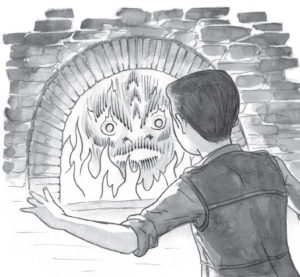
‘Tomás! Tom, what are you doing?’
Tom blinked and looked up. Dad was frowning at him.
‘Are you all right, son?’
‘I-I thought…’ Tom peered into the fiery forge, but there was nothing there. ‘I thought I saw something,’ he muttered.
Dad smiled. ‘It’s been a long day. Let’s finish tomorrow.’
Tom nodded, and they went in for supper.
That evening, tucked into his tiny bunk, he thought again about the face. The bony head, and the teeth, so sharp. And the eyes…
He woke in the dark with a start. Then he laughed to himself at his imagination, and went back to sleep.
They finished the last sword the next morning. Tom checked the flames several times, but today there was nothing – just crackling wood and white-hot charcoal.
He held up the sword, watching it glitter.
Dad inspected it. ‘Good job, son. Let’s finish up. Captain Hork will be here soon.’
They packed them into crates by the doorway. But as Dad left, Tom looked again at the fire – and the face was there! Unmistakable, dark and fierce, with eyes of flame…
‘Be ready, Tomásssss,’ it hissed. ‘He’s here…’
‘Tomás!’ bellowed Dad. ‘Come on, he’s here!’
Dragon Storm: Tomas and Ironskin and Dragon Storm: Cara and Silverthief by Alastair Chisholm are published by Nosy Crow, priced £6.99.
We love a little bit of history here at BooksfromScotland, and if you’re interested in starting off the young ‘uns on their journey to becoming history buffs, then we highly recommend Talking History: 150 Years of World-changing Speeches as a great starting point. We caught up with authors Joan Haig and Joan Lennon to chat more about the gorgeous history book.
Talking History: 150 Years of World-changing Speeches
By Joan Haig and Joan Lennon
Published by Templar
Hello Joan and Joan! Your 2022 has already got off to a cracking start with the publication of your children’s book, Talking History. Can you tell us how the collaboration came to pass?
Joan H.: Thanks – we’re excited to be chatting to you about it. We met at Moniack Mhor Creative Writing Centre in the Highlands – I had signed up for a retreat to start my novel and Joan Lennon was one of the tutors. We kept in touch after the retreat. The collaboration was an exciting new direction for both of us – Joan Lennon had many published children’s books to her name already, but not nonfiction.
Joan L.: Yes – a whole new area! A book about speeches was Joan Haig’s idea originally, but when she invited me on board, I jumped at it! We’re both excited about words and how they work, and also about telling stories. Non-fiction is another way of telling stories – and illustrated non-fiction adds another dimension as well. We started drawing coloured pen pictures of what we thought the book might look like on big sheets of paper on Joan Haig’s kitchen table. We were so excited – and so rubbish! Thank goodness they asked André Ducci to do the artwork!
You’ve both written books individually too. How was the switch to being co-authors? How have you found collaborating on the project?
Joan L.: Everything about writing non-fiction is collaborative, and that takes some getting used to! The two Joans worked together on whittling down the list of chapters, and the editorial team and the marketing department also made suggestions. When the list was agreed, we divided the chapters between us to write. Our editors worked on the text we submitted. There was the collaboration with the designer and the illustrator who created layouts into which the texts needed to fit. Then there were sensitivity readers and an overall external reader. Collaborating is a full-time exercise in the world of non-fiction!
If everybody who worked on the book was on the front cover if would have to be twice the size. Two Joans and an André plus everybody else make a good team – a good team that is going to be working together again very soon… watch this space!
Joan H.: I enjoyed the collaborative process. Having a co-author and editor to share ideas with was helpful. Going into the project I was fairly confident that I knew how to write nonfiction – although new to children’s writing, I’d had several papers and chapters published in academic journals and books. I quickly learned, however, that things I might have taken 5000 words to analyse in an academic paper, I had somehow to condense into 50 words for this readership! Having an experienced wordsmith like Joan Lennon, two sharp-eyed editors (both ruthless with wordcount!), plus a team of issue-specific consultants was, therefore, fantastic.
The histories you share are shaped by speeches. How did you decide which speeches to write about?
Joan L.: We wanted speeches that were inspiring, with a spread of time and gender and geography, but the question of copyright also had to be taken into account. Not every speech we were excited about was available to use in a book such as ours. But we were more than happy with the final chapters!
In the introduction you mention a knitting teacher who played you speeches in her class. Can you tell us more about that wonderful memory?
Joan H.: Mrs. Chamberlain was my Religious Education teacher, who took a catholic (with a small ‘c’) approach to her subject. It was the mid 1990s and she taught us to knit a special pattern of jumper for children in Africa suffering from hunger and drought. While we cast on and off, she played us famous orations, and sometimes music, on her vinyl record player. One clear memory is of the whole class falling silent – knitting needles paused – in the final section of ‘I Have a Dream’ by Martin Luther King, Jr. We abandoned the knitting and talked about the Civil Rights Movement. It was one of those magical classes where nobody wanted the bell to ring!
The book covers the last 150 years of international history. What prompted the decision to stick to modern history?
Joan L.: There are SO MANY amazing speeches! We had to narrow them down to 16 for the book, and the starting point of 150 years ago was one of the ways we did that.
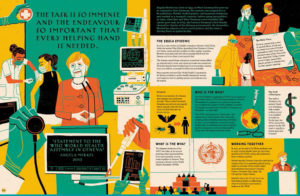
It is a beautiful book too, with such vibrant illustrations. Can you tell us a little more on working with the illustrator Andre Ducci?
Joan L.: It’s fabulous, isn’t it! And working with a designer and an artist has been a real eye-opener. The way image and story work together to make something more than just image or story on their own is magical.
Joan H.: I agree – the book is beautiful. There’s a luxurious quality to the paper, which is matt and suits the bold style.
We worked mostly with the editors, Lydia Watson and then Carly Blake, and the inhouse designer, Adam Allori, who would then work with André Ducci. There was usually some back-and-forth as text was edited or when we were dealing with sensitive topics – but really not much. They are wizards! Receiving the ‘scamps’ (Adam’s initial sketches) and then the ‘roughs’ (André’s initial illustrations) was one of the most exciting parts of the process.
We’re at the beginning of 2022, the year that has been designated the Year of Scotland’s Stories. If you could pick a favourite speech from Scotland’s history, which would you choose?
Joan L.: I’m going to choose the speeches of George Macleod. He was a passionate speaker on all sorts of issues – pacifism and CND, crofting, unemployment, the Green Party. I first came to Scotland in 1978 to work at the Abbey on Iona for a year, and the place was imbued with the practical humanity of his vision. Bringing unemployed workmen from poverty-stricken areas of Glasgow to rebuild the Abbey in the 1930s is definitely one of Scotland’s inspiring stories.
Joan H.: Sticking with modern history, I would choose the first speech given in Parliament by Winne Ewing, in 1967. As one of only four female MPs in Scotland, she was a trailblazer. In her address she said, ‘I am absolutely on the side of youth.’ And she was. She asked politicians and the wider public to listen to young people and to treat them with greater respect. Scotland has done well with this, but Ewing’s message is still relevant: we need to continue to work on representation so that youth from all sectors of society feel their voices are being heard.
Talking History: 150 Years of World-changing Speeches by Joan Haig and Joan Lennon is published by Templar, priced £15.99.
Time now to introduce you to a new voice in children’s fiction, Alex Mullarky. If you like your children’s books packed with magic, adventure and mischief, it’s time to put this book on your list! Here’s a sneaky peek . . .
The Sky Beneath The Stone
By Alex Mullarky
Published by Floris Books
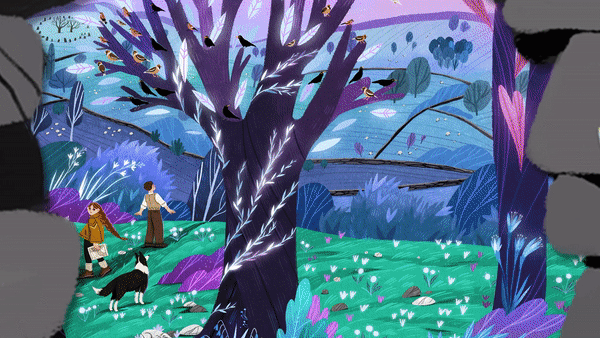
Thirteen-year-old Ivy North is an adventurer. She can pitch a tent in four minutes flat, knows the local landscape like the back of her hand, and she’s an expert map reader. There’s just one problem.
She’s afraid to go outside.
But when her little brother is transformed into a kestrel by a powerful sorcerer, Ivy is the only one who can rescue him. Following him through a mysterious hole in the garden wall, she emerges in Underfell — an enchanted realm that seems like the Lake District she knows, but is dangerously different…
The Sky Beneath the Stone is the immersive and beautifully written first novel from bold new voice in children’s fiction Alex Mullarky. Publishing on the 24th of February, this stunning fantasy adventure effortlessly blends the natural world with the fantastical in a celebration of nature, history and folklore. Join the author below for a special sneak peek at this breath-taking debut for 10-13 year olds…
‘Bright and brilliant — a perfect blend of magic, adventure and heart.’
— Sophie Anderson, author of The House with Chicken Legs
‘A beautifully written adventure steeped in the myths and magic of the Lake District.’
— Ross MacKenzie, author of the Nowhere Emporium trilogy
The Sky Beneath The Stone by Alex Mullarky is published by Floris Books, priced £7.99.
Celebrating Scotland is at the centre of 2022’s Year of Stories and Henry Bell’s The Inner Circle is packed with poetry as love letter to the city of Glasgow, its sights, smells, colours and characters. Here, we share three poems from the collection that have us ready to speed across the M8!
Poems taken from The Inner Circle
By Henry Bell
Published by Stewed Rhubarb
O Watermelons!
O honey mango shop!
O slick of sun tan lotion!
ripe back lane bins
and the laburnum’s yellow ropes
of poison thrill then fade
so breathe in deep
the back court smoke
a jungle of weed
and bar-b-ques
O buzzing copter!
O row of hot glass bottles!
radios roar from shimmering cars
twins hold
their shrieking guinea pigs
as the Bengal cat
prowls through knee high
yellow thistles
a paddling pool is filled
a phone rings
and a siren ripples
out along the street
O pizza boxes!
O boy racers!
Rat Caught in a Manhole Cover
Rat caught in a manhole cover
you have rolled a natural one.
Too fat but not quite greasy enough
you are suspended between the sewer
and the stars: easy prey for dogs, cats
or motorbikes. Dear rat
I do not offer you pity but fellow-feeling,
how rat-like, how human, to dream
of an open road, but find yourself
chained to your dankness.
I bet the other rats make fun of you.
Here, have this poem, it is about your courage,
your hope, your triumph, the way we see you,
full gut stuck in a manhole, straining
and all round the world say ‘aah
that brave rat is me.’
Comrade Teacake
I am watching
a Tunnock’s tea cake
fall to earth
in real time
from a height
of 37,262 metres.
It spins and glints. Little
Glasgow Sputnik,
pudding of whimsy,
facing the vastness,
the coldness,
the darkness.
There is nothing better
to do right now
than watch a tea cake
hurtle through space,
115 Eiffel towers above us,
556 Wallace monuments above us,
here in the future.
O little teacake,
from Glasgow to Saturn,
so alone up there.
But imagine
what we will achieve
when you have come back
to earth
sweet cosmonaut.
Your red foil and stars
bring tears
to a kulak’s eye.
No empire biscuit this, no.
A teacake
of internationalism,
circling the earth,
spreading
its mallowy joy.
The Inner Circle by Henry Bell is published by Stewed Rhubarb, priced £5.99
Tigeropolis, the trio of books from R D Dikstra is now a new 10-part weekly Fun Kids radio comedy series from Belle Media. Kay Hutchison from Belle Media tells us more.
Tigeropolis (Beyond the Deep Forest, The Grand Opening and Caught in the Trap)
By R D Dikstra
Published by Belle Media
The series is adapted from our popular Tigeropolis books about a family of vegetarian tigers battling to save the planet and is narrated by award winning Indian filmmaker Ashwika Kapur.
It’s the unbelievable story of these tigers whose peaceful life, hidden away deep in the forest, is suddenly under threat when the bulldozers are set to close in. Tiger cubs Bittu and Matti and the rest of their tiger family get up to all sorts of adventures as they battle developers, outsmart poachers, and take on a quest to find missing treasure.
We wanted these books to have a strong underlying enviromental message as they are inspired by the author’s long-term involvement in conservation. Richard Dikstra has travelled to all seven continents doing this work, but his first ever experience seeing a tiger prowling through the Indian jungle as dusk began to fall has stayed with him ever since.
This is the second children’s radio series Belle Media has produced from one of their titles. Last autumn they also produced the Adventures of Captain Bobo, which was narrated by late great John Sessions.
Belle Media have a background in radio and television, and have always been interested in exploring the wider potential of our IP. In addition to print, we’ve released a number of audiobooks, working with talent such as Richard E Grant and Bill Paterson, but with our children’s titles we knew we could do much more. They both offered up potentially rich audio worlds that could be adapted for radio with a story that would work as a series of stand-alone episodes .
We talked with Fun Kids about Tigeropolis last Spring. We also got to work to find out if some of the smaller local FM stations might be interested in collaborating as we’d already established good relationships with them following our earlier series. Happily they were positive about the proposal. With radio stations keen to broadcast our work, we went on to win funding from the Audio Content Fund to start work. Production for the Tigeropolis series began last summer.
In writing the scripts we brought in an experienced editor with extensive credits on short form children’s animation to make sure the translation from print to radio worked well. We knew from the outset we wanted to work with Ashwika. In addition to her beautiful, clear voice, Ashwika brings a deep knowledge of the real issues facing tigers in the wild. She’s based in Kolkata, so we had to record her ‘down the line’ from a studio there, with our director in London guiding her performance. Editing and sound effects were added by Strathmore Studios and the music was commissioned from the same young composer we’d worked with on Captain Bobo. A series like this doesn’t just require a theme, it also requires a number of musical stings to convey or emphasise emotion and to provide appropriate scene breaks/time shifts.
The series was also recorded in Gaelic for transmission on local FM stations across Scotland. The translation and narration is by well-known singer and actor Gillebride Mac ‘IlleMhaoil. Gillebride who also worked with us on Captain Bobo – it was recorded at Pacific Quays, Glasgow, the day before the site was locked down for three weeks ahead of COP26.
In addition to the drama, we also wanted to emphasize the conservation themes of Tigeropolis, so we decided that we would also produce a series of real-life eco-features enabling primary school children to question experts about key environmental issues.
Experts include award-winning Scottish wildlife filmmaker, Doug Allan, talking with children from Broomhill Primary in Glasgow about climate change and his work filming polar bears. Another episode features biologist and presenter Gillian Burke talking about water management and the re-introduction of beavers and recorded on location at a site in a flooded wood in deepest Cornwall.
To fit within the requirements of a broadcast schedule these eco-features had to be edited to fit 5 min spots. However, the children were so engaged in the discussions that we decided to make sure additional full-length podcast versions would be available online. The first of the Tigeropolis eco-features, was recorded at the Wildheart Animal Sanctuary on the Isle of Wight with zoologist Megan McCubbin talking about tiger conservation.
It’s been quite the ride bringing this project to fruition. We’ve learnt that it’s more than possible to take a well-loved book series and develop it in new ways. Radio production isn’t the simple option, but there are people out there that have the expertise to help bring everything together. It’s great fun and it can help books to find a new audience.
Tigeropolis goes out on Fun Kids every Friday from 14th Jan at 4.45, repeated the next day. The series runs through to Friday 18th March. The eco-features go out on Wednesdays from 19th Jan. Fun Kids is on DAB, on-line and on Smart Speaker.
The series is also being broadcast in English and Gaelic on Radio Skye, Isles FM, Nevis Radio, Two Lochs Radio, Paisley FM, Lochbroom FM, Arran Sound, Dunoon Community Radio and K107FM (Kirkcaldy) – check local listings for times.
Tigeropolis (Beyond the Deep Forest, The Grand Opening and Caught in the Trap) by R D Dikstra are published by Belle Media, priced £7.99.
Alison Watt’s latest artworks, A Portrait Without Likeness, asks exciting questions of portraiture, of seeing and knowing, in a way that excites David Robinson as he contemplates the book that accompanies the exhibition.
A Portrait Without Likeness
By Alison Watt
Published by the National Galleries of Scotland
You have to look really hard at Allan Ramsay’s portrait of Margaret Lindsay of Evelick, his second wife, before you realise that the rose she is holding in her left hand has a broken stem. The rose itself, pink and fading, is facing downwards, the stem almost translucent: compared to the immediacy and directness of Margaret’s gaze at the viewer, neither of them seem to matter. Minor details only.
Alison Watt had looked at that portrait for years before she noticed the broken-stemmed rose. She knew it was important, because when she looked at the rest of his works, there it was again, in a preparatory red and white chalk drawing of a hand holding the rose, the fingers and flower at precisely the same, slightly awkward, angles, the light and shade mirroring each other in both preliminary drawing and finished painting.
What does it mean, this broken rose? Does it mean anything at all? Maybe it’s just Ramsay saying: ‘Here is my wife arranging flowers. She is putting the finishing touches to a bouquet that is just as beautiful as she is and is weeding out the one solitary imperfection.’
Or is he saying something more? On the note next to Ramsay’s portrait of his first wife Anne Bayne, at the Scottish National Portrait Gallery, we are reminded that all three of their children died in infancy before she herself died in childbirth in 1743. The note next to his second wife’s portrait points out that only three of her ten children with Ramsay survived childhood. Such a crushing weight of familial death surely demands a significant memento mori, so perhaps that was the real purpose of the broken-stemmed rose. But whose death? His first wife’s? (Would his second wife join in that mourning?) His lost children – yes, but from which marriage? Or all of them?
Two and a half centuries on, we can only guess. We can make up stories from these incidental elements in Ramsay’s portraits of his female sitters – Margaret Lindsay’s broken-stemmed rose, the book held by the bluestocking Countess of Balcarres, the cabbage leaf held by society hostess Frances Boscawen, the pink ribbon round Anne Bayne’s lace cap – that may well be true, but we can never be certain.
Some people might find this lack of certainty irksome, but unknowability can be alluring too. In fact, it’s central to Alison Watt’s exhibition A Portrait Without Likeness, which ends next month at the Scottish National Portrait Gallery before transferring to Inverness Museum and Art Gallery (29 January-2 April). As she points out in the eponymous accompanying book the meaning of the broken-stemmed rose in Margaret Lindsay’s portrait, will always elude us – but that is not necessarily a bad thing: ‘It has come to represent for me the mysteriousness of painting itself.’
Because Watt’s 16 new paintings are all still lifes based on (but not copied from) details of Ramsay’s portraits of female sitters – an exquisitely worked lace handkerchief here, a quill pen there – the exhibition asks a series of intriguing questions about what we can ever learn from painting. To what extent, for example, do details in portraits – objects with which we surround ourselves in our daily life – matter? Can they deepen our appreciation of a portrait from the past? And – to get right to the heart of Watt’s work – does a portrait even need a face?
Apart from her exquisite skill with brush on canvas, one of the things I admire about Watt – and it’s reflected in the book, the exhibition, and in her book festival interview with Andrew O’Hagan (check it out on edbookfest.co.uk – it’s still up there) – is the way in which she talks about Art without slipping into Artspeak. I’m sure you know what I mean by that – examples litter Private Eye’s Pseuds’ Corner and conceptual art exhibition catalogues – but only last month an enjoyable reminder came in Alexander McCall Smith’s 14th Scotland Street novel Love In the Time of Bertie. In it, portrait painter Angus Lordie reluctantly attends a talk at which a remorselessly trendy lecturer decries figurative art as ‘fixations of a stale mind located in a stale world-view’. ‘We no longer need paintings,’ he says, ‘we need experiences. We need ideas that spring not from the material but the inner experiential universe.’
Although the plot then takes a sharp turn towards the improbable – Edinburgh socialite nun Sister Maria-Fiore reveals that she has been appointed a Turner Prize judge – Lordie is cheered by the nun’s reaction to these heresies. ‘I found myself thinking who is the stale one here,’ she says, going on to blame conceptual artists ‘for saying the same thing over and over again. Whereas anybody now who paints in a conventional style is the radical, the outsider.’
McCall Smith hasn’t yet seen Alison Watt’s show, but if and when he does, I think he will find her work proves the truth of his characters’ observations. At the Glasgow School of Art, Watt told O’Hagan at the Edinburgh book festival, ‘I was deeply unfashionable because I was looking at 19th century French painting, which led me to spend most of my time in the life room. In my final year there were just the two of us in the studio, just me and the model, because it was being gradually phased out as a discipline.’
A classical arts education was, she says, ‘invaluable’ – but it hasn’t meant predictability. Just the opposite: having established herself early on as a portrait artist (the Queen Mother sat for her in 1989) and painter of realistic nudes posing on drapery, her whole aesthetic then turned away from the human form and towards the backcloth. She herself would argue that she still sees her work as figurative – even if the human figure is no longer in it.
Why isn’t it? I’ve never even met Watt, never mind interviewed her, but if I did, I expect she’d say that it doesn’t always need to be. That a work like Still, her huge quadryptych of white cloth (an empty shroud?) in the Warriors’ Chapel in Edinburgh’s Old Saint Paul’s Church would lose all its massive spiritual heft if it had even the merest hint of a body. That likenesses in portraiture might have nothing to do with what a person is really like.
And how do you show that anyway? You might capture a typical expression, you might even be able to sum up some quintessential element of their character, but it won’t be all of their life, just one particular moment in it. But if what makes us us – the very thing the portrait painter is aiming for – is impenetrable, and the things we surround ourselves with aren’t? An artist can lift those objects out of time, drag them centuries into the future, and make us think about the humans who loved them in the past. It’s some trick, but in A Portrait Without Likeness, Alison Watt pulls it off.
A Portrait Without Likeness by Alison Watt is published by National Galleries Scotland, price £20.
As well as plates from the exhibition, it also contains an introduction and interview with Watt by Julie Lawson, an essay on her work by Tom Normand and a short story by Andrew O’Hagan. The exhibition at the Scottish National Portrait Gallery ends on 6 January and opens in Inverness on 29 January.
Who doesn’t love getting books for Christmas? They’re the perfect gift, and easy to wrap too! If you’re still having trouble deciding what to get your friends and family, here are some recommendations from us. . .
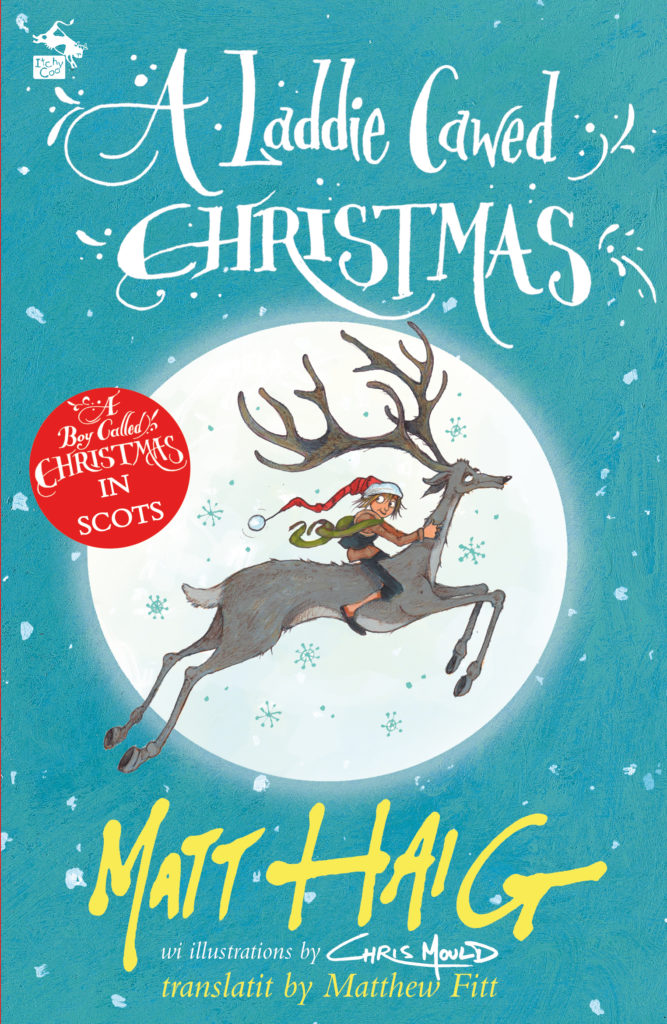 A Laddie Cawed Christmas
A Laddie Cawed Christmas
By Matt Haig, translated by Matthew Fitt
Published by Itchy Coo
Now in Scots for the first time, A Laddie Cawed Christmas is Matt Haig’s wonderful tale of adventure, snow, kidnapping, elves, more snow and a boy called Nikolas, who isn’t afraid to believe in magic.
Ye’re aboot tae read the richt story o FAITHER CHRISTMAS . . .
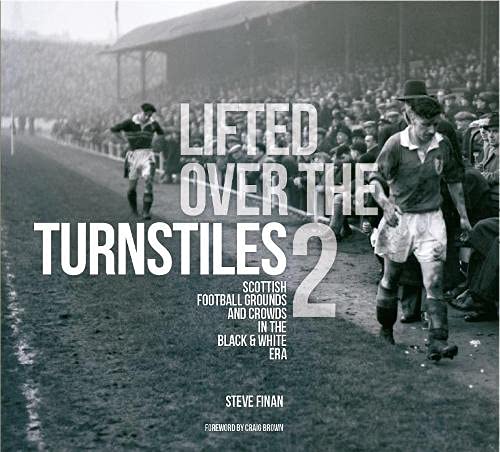 Lifted Over the Turnstiles: Scottish Football Grounds And Crowds In The Black & White Era, Volumes 1 – 3
Lifted Over the Turnstiles: Scottish Football Grounds And Crowds In The Black & White Era, Volumes 1 – 3
By Steve Finan
Published by DC Thomson
Delve into vintage photos of Scottish football stadiums and crowds that have lain unseen, in archives and rarely accessed collections, for decades. Each volume also contains anecdotes and quirks gathered from fans, club historians and newspaper articles of decades past. Perfect for the football fanatic in your life!
 30 Days of Creativity: Draw, Colour and Discover Your Creative Self
30 Days of Creativity: Draw, Colour and Discover Your Creative Self
By Johanna Basford
Published by Ebury
In just thirty days, you can develop a creative habit that allows a little more calm and joy into your life. These easy-to-follow daily practices will help unleash your creative spark and build the foundation of your artistic practice.
With a mix of whimsical doodles, pages of expert advice, and simple step-by-step drawing guides, this book is designed to nurture every inner artist.
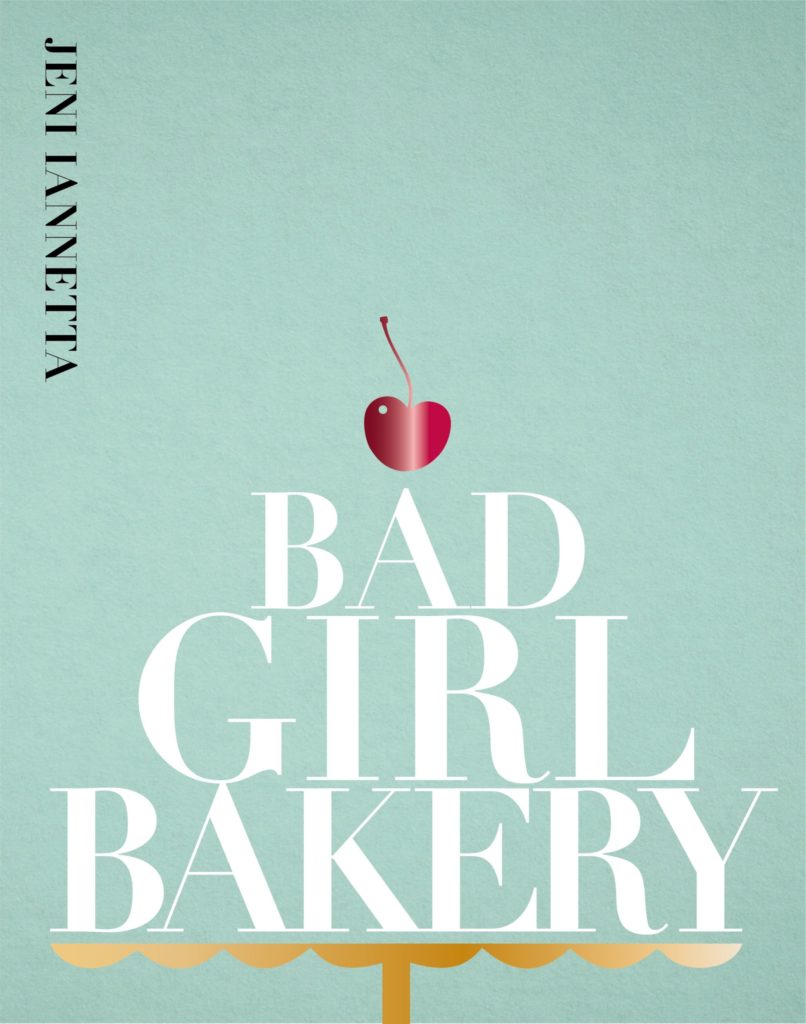 Bad Girl Bakery
Bad Girl Bakery
By Jeni Ianetta
Published by Kitchen Press
Unapologetically generous and indulgent, Jeni Iannetta’s cakes, bakes and biscuits have won plaudits ever since the Highland bakery opened in 2017. A fantastic book for every keen baker with an eye on spoiling everyone around them in the festive break!
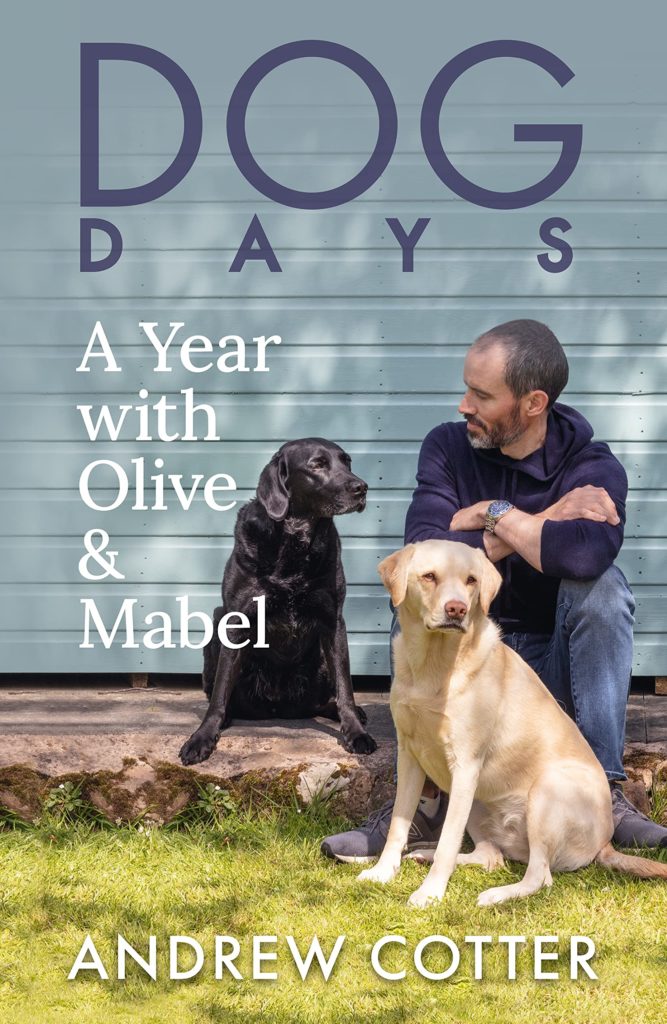 Dog Days
Dog Days
By Andrew Cotter
Published by Black and White
Olive and Mabel are back! And in this new diary from Andrew Cotter we find out what happened after his two superstar Labradors chewed up the lockdown internet and found international fame. Followed by whispers of ‘Is that really Olive and Mabel?’ the three of them pad around literary festivals, breakfast TV, live radio and even an appearance on Good Morning America. But has fame changed our favourite Labradors?
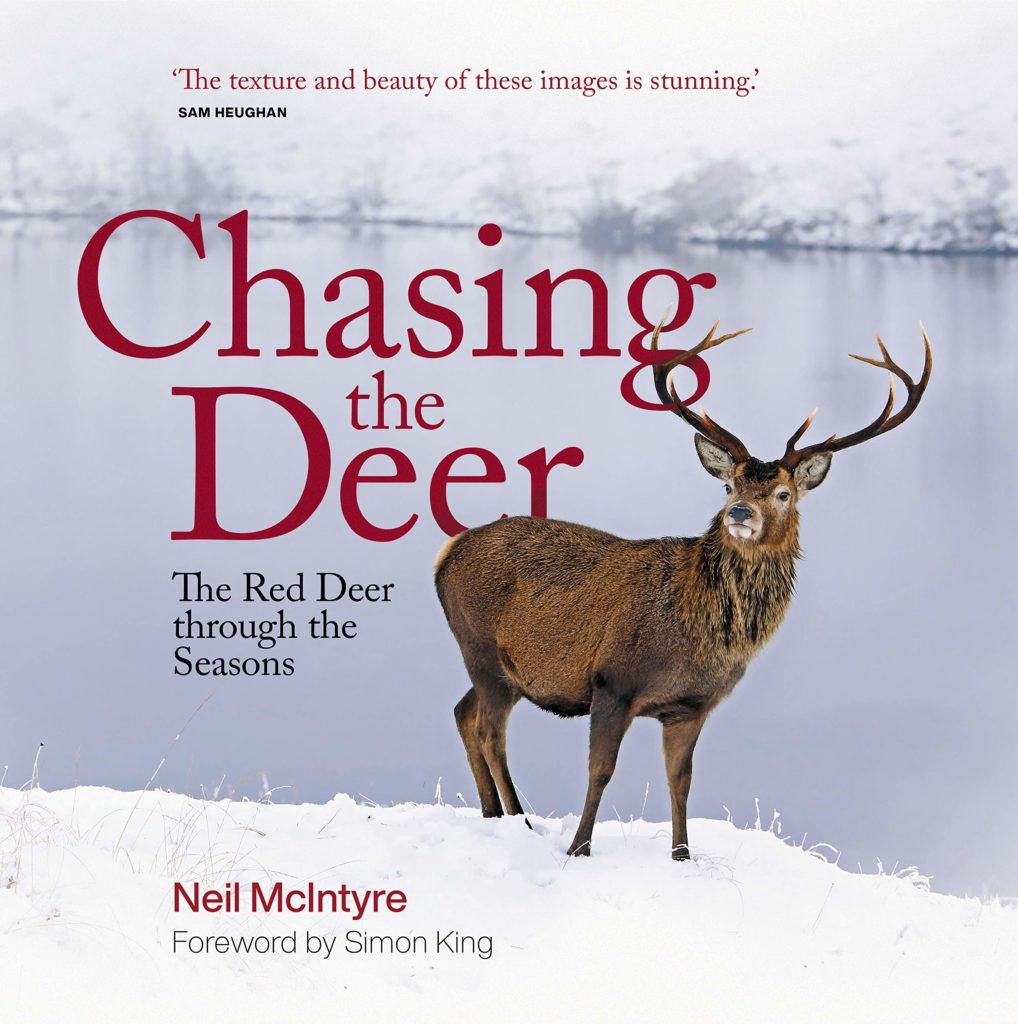 Chasing the Deer: The Red Deer Through the Seasons
Chasing the Deer: The Red Deer Through the Seasons
By Neil McIntyre
Published by Sandstone Press
Born into a family of deer stalkers, Neil McIntyre has been fascinated by red deer all his life. They have been central to his career as a wildlife photographer and, in this stunning collection of photographs, he invites you to know and respect them as he does.
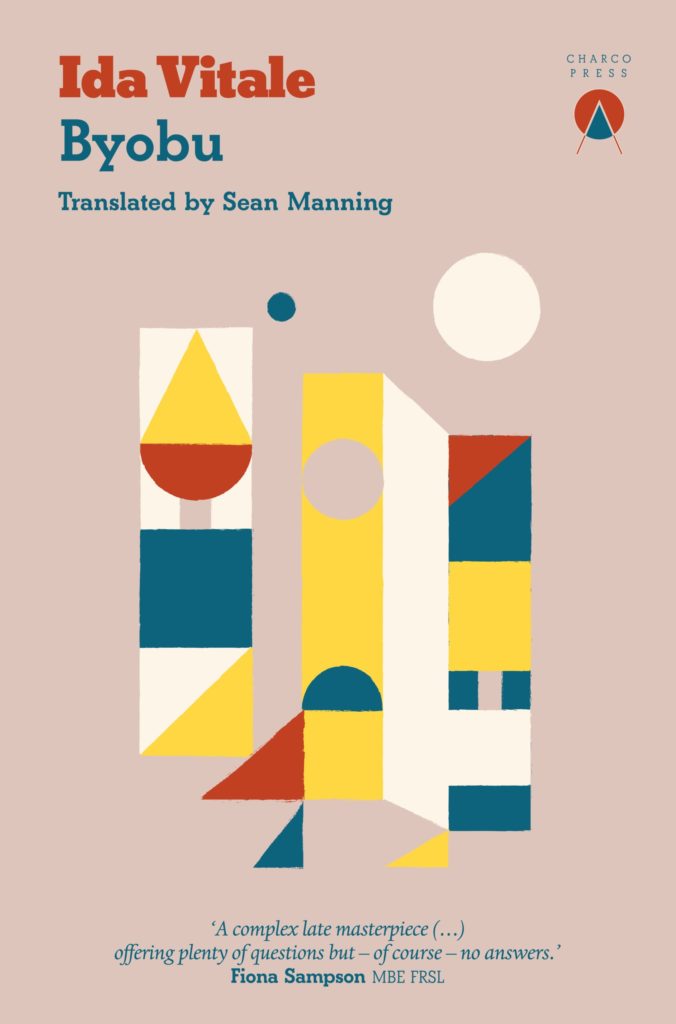 Byobu
Byobu
By Ida Vitale
Published by Charco Press
Ida Vitale is a poet, translator, essayist, and literary critic. In 2018, she was just the fifth woman to receive the prestigious Miguel de Cervantes Prize, the highest recognition for literature in Spanish, and in 2019, she was named by the BBC as one of the 100 most influential women. Charco Press bring us her latest work into English, an intimate work filled with poetry and knowledge, densely interwoven without pretension, born of a single force: curiosity.
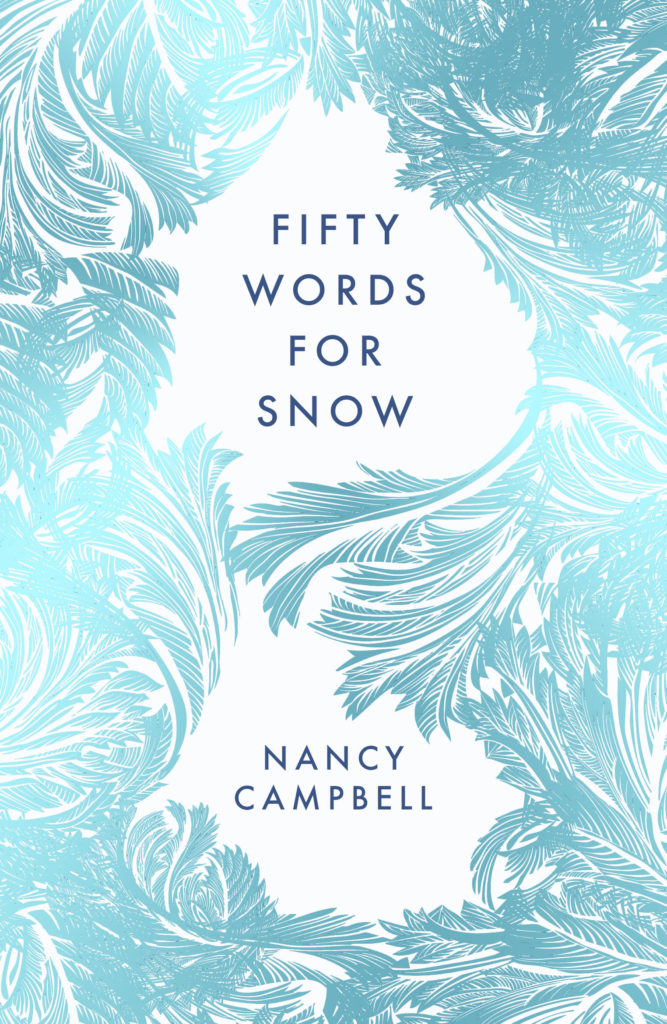 50 Words for Snow
50 Words for Snow
By Nancy Campbell
Published by Elliott and Thompson
A truly gorgeous gathering from writer and Artic traveller Nancy Campell, where 50 linguistic gems for these feather-like flakes we know as snow meet myth and story and bring new meaning to old magic. It is a journey to discover snow in all cultures through different languages.
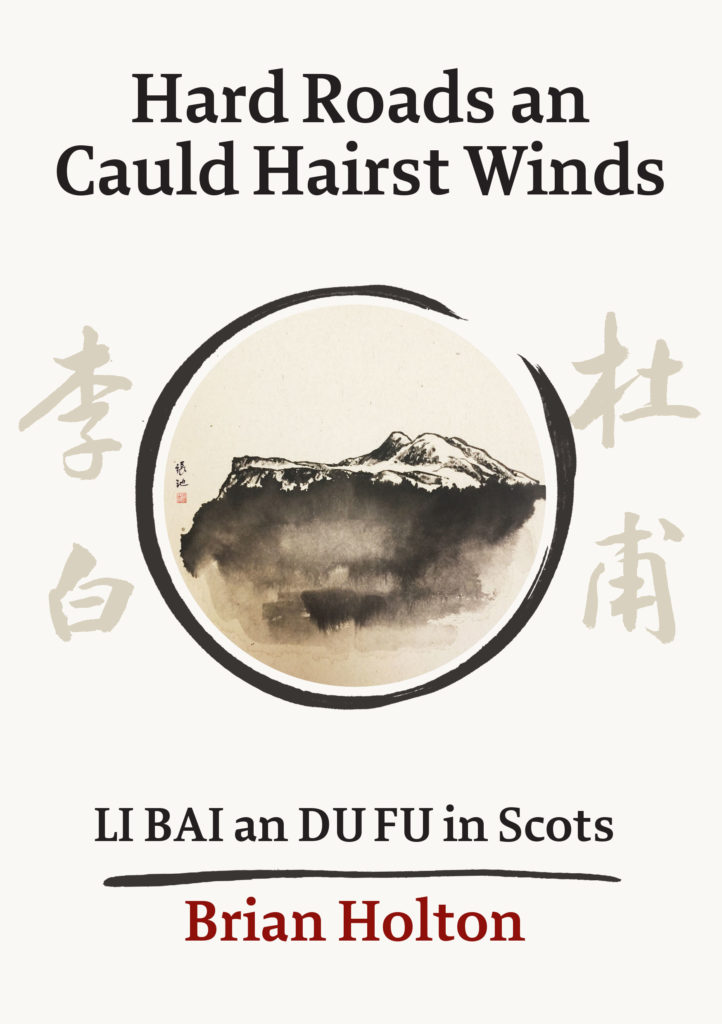 Hard Roads and Cauld Hairst Winds: Li Bai an Du Fu in Scots
Hard Roads and Cauld Hairst Winds: Li Bai an Du Fu in Scots
By Brian Holton
Published by Taproot Press
In these astonishing poems, Brian Holton transposes the work of two of Ancient China’s most renowned poets, Li Bai and Du Fu, into the world of contemporary Scotland through a literary Scots full of joy and vitality. The poems are complemented by beautiful calligraphy by artist Chi Zhang.
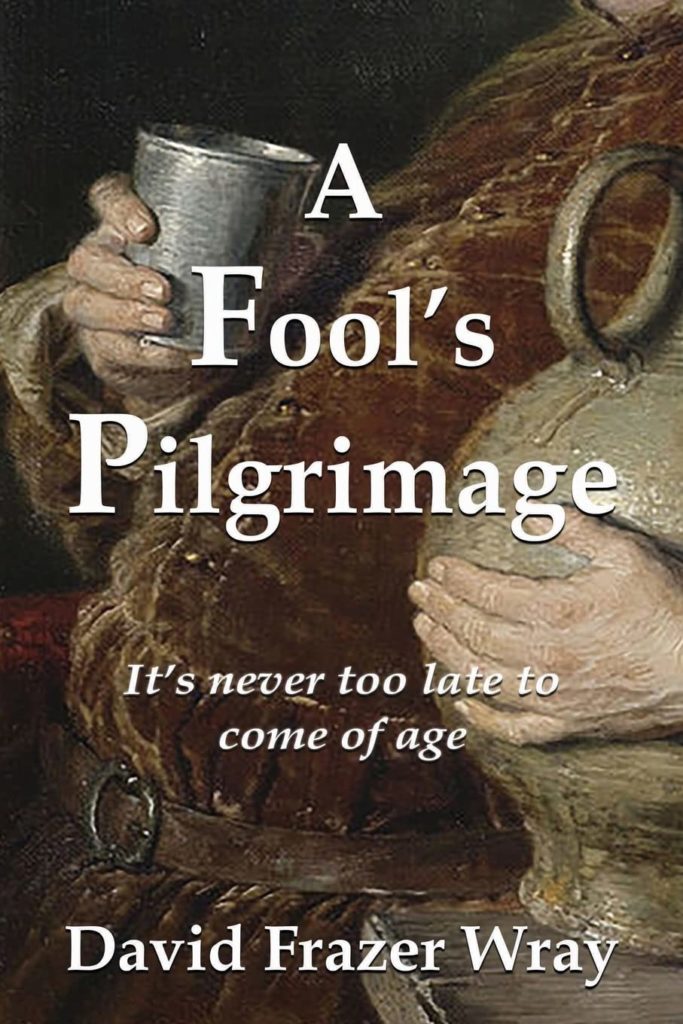 A Fool’s Pilgrimage
A Fool’s Pilgrimage
By David Frazer Wray
Published by Sparsile Books
A comic novel told in the distinctive voice of the bibulous old Sir John Falstaff, A Fool’s Pilgrimage is a daybook written in the early years of the fifteenth century. Peopled with strange and wonderful characters, such as Denys the Mad Holy Man, Guillermo the Gypsy Prince, and Jean-Baptiste of the Bone-Handled Knife, we are whisked through medieval France in a series of hilarious escapades.
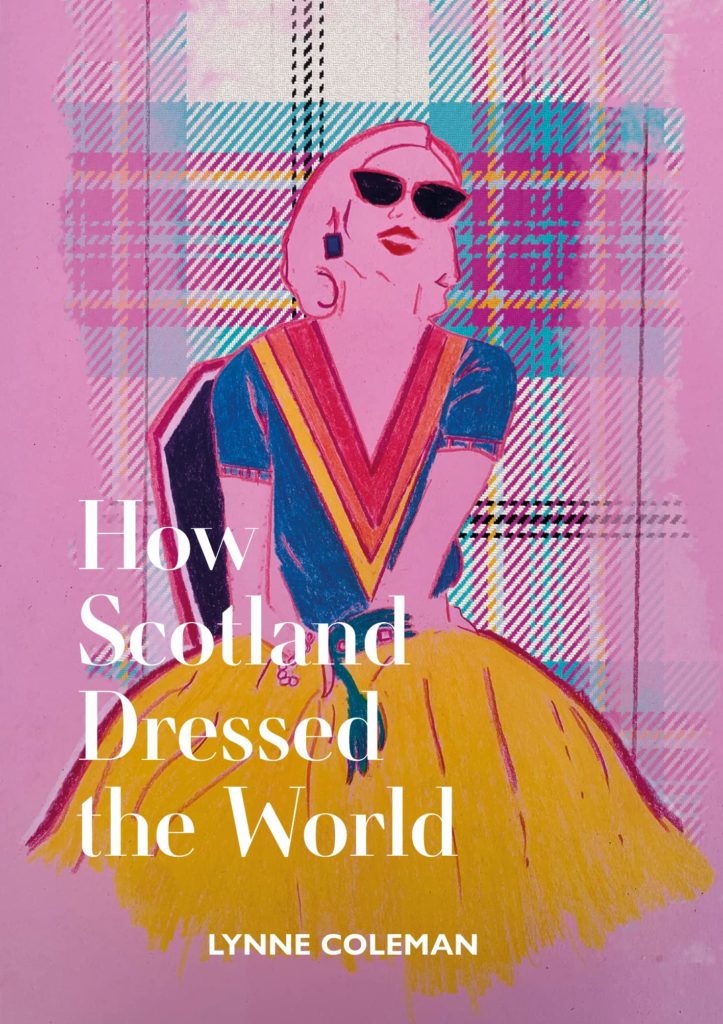 How Scotland Dressed the World
How Scotland Dressed the World
By Lynne Colman
Published by Luath Press
From Grace Kelly in her Pringle of Scotland twinset to Cher and Dionne tartan-twinning in Clueless, it all returns to Alba.
In How Scotland Dressed the World, Lynne Coleman explores the country’s rich cultural impact on the modern world. Telling the tales of the style and cloth that covers continents and how it has been woven into political and economic movements, this book is a must-have whatever your style tribe.
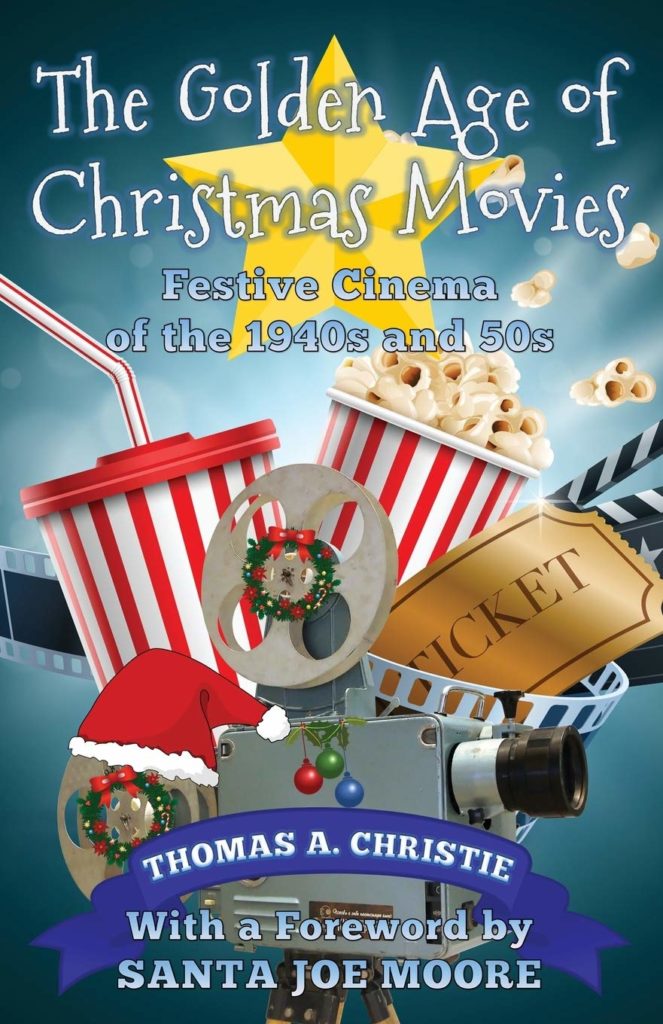 The Golden Age of Christmas Movies
The Golden Age of Christmas Movies
By Thomas A. Christie
Published by Extremis
Today, the Christmas movie is one of the best-loved genres in modern cinema. This book takes a look back at the Christmas movies of the 1940s and 1950s that would define Christmas films for decades to come, including It’s A Wonderful Life, Miracle on 34th Street and White Christmas.
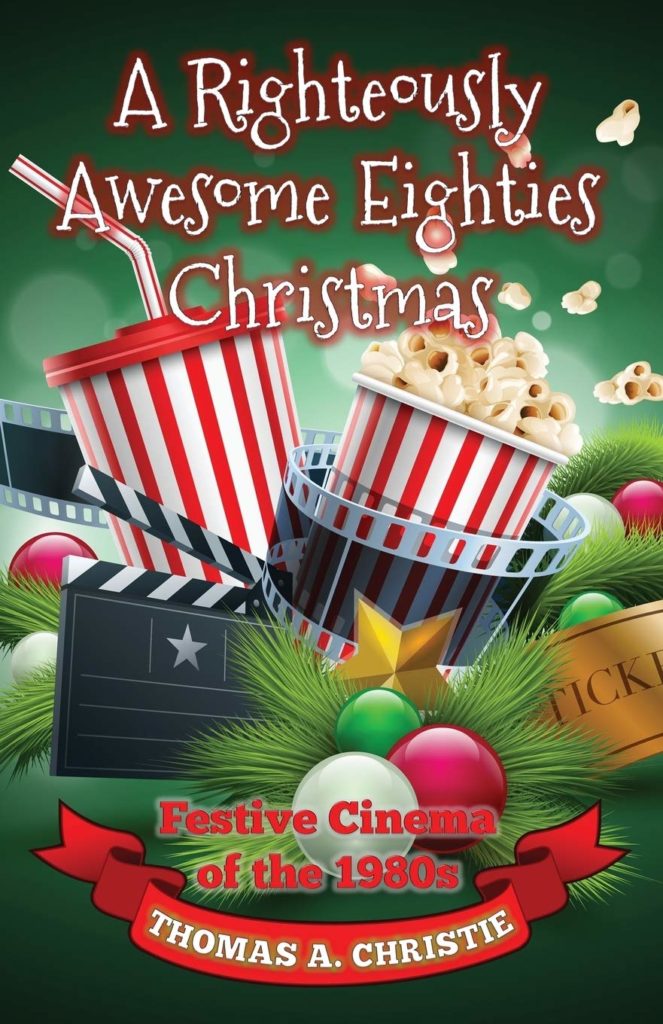 A Righteously Awesome Eighties Christmas
A Righteously Awesome Eighties Christmas
By Thomas A. Christie
Published by Extremis
But if you prefer more modern Christmas films, then this look back at the festive films of the 1980s should find its way into your stocking, as it celebrates the decade where the genre was mashed up with comedy, drama, fantasy and horror where nostalgia and modernity collide.
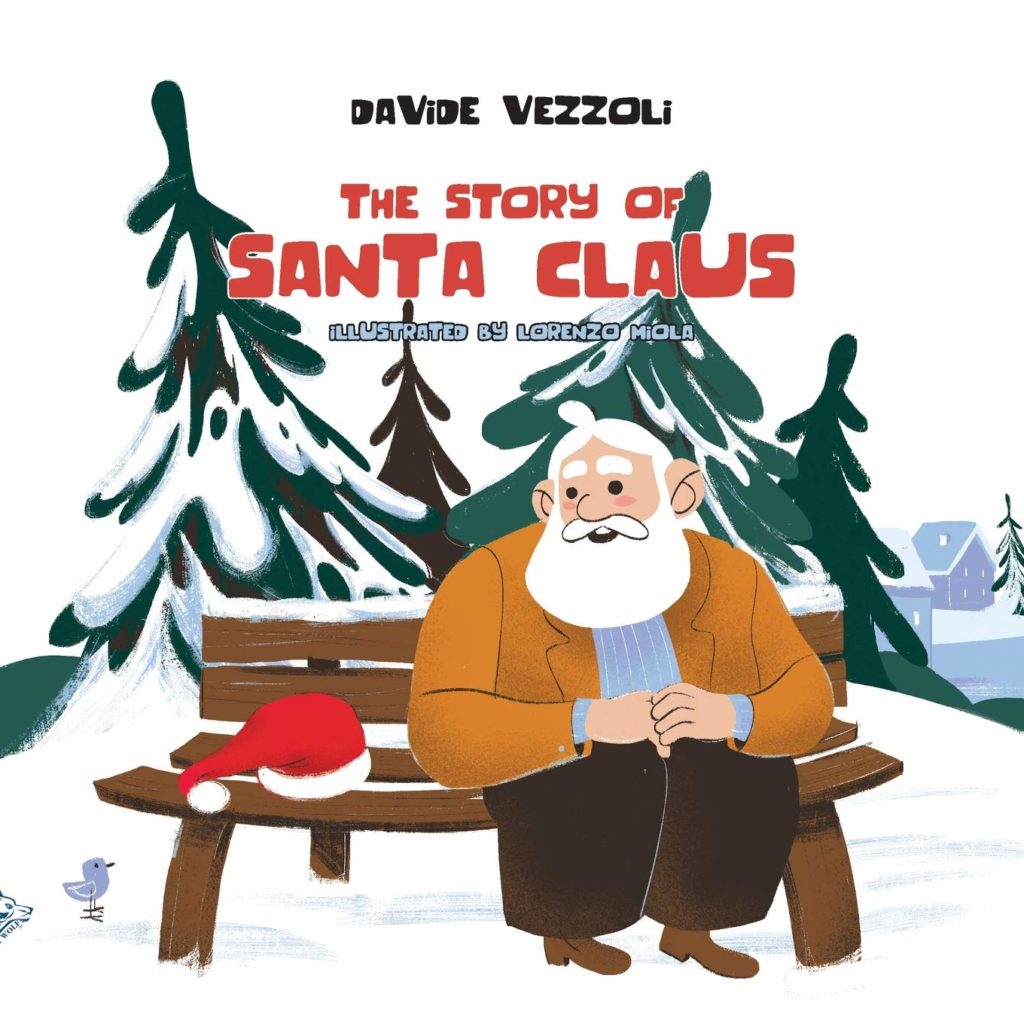 The Story of Santa Claus
The Story of Santa Claus
By Davide Vezzoli, translated by Charlotte J. March
Published by Black Wolf Edition
An ideal gift for Christmas lovers from aged 8 to 80, this wonderfully illustrated book tells the story of Santa Claus as he and his elves get ready for their worldwide trip down everyone’s chimneys!
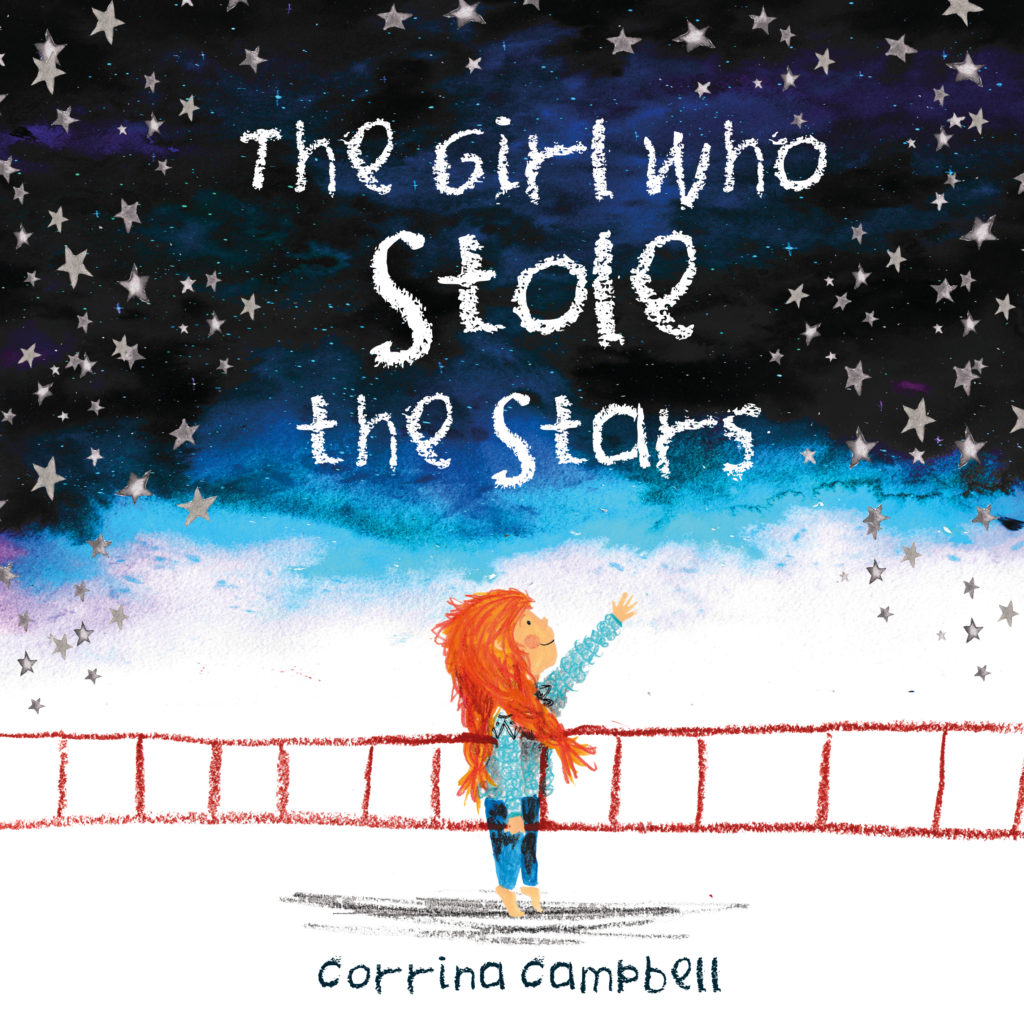 The Girl Who Stole the Stars
The Girl Who Stole the Stars
By Corrinna Campbell
Published by Little Door Books
This special seasonal tale is sure to be a festive favorite. Bringing themes of friendship, love, happiness, and doing the right thing alive through beautiful illustrations that touch the heart of every reader, Corrina Campbell shows she is just as much the shining star as all those that sparkle and gleam in her glowing debut.
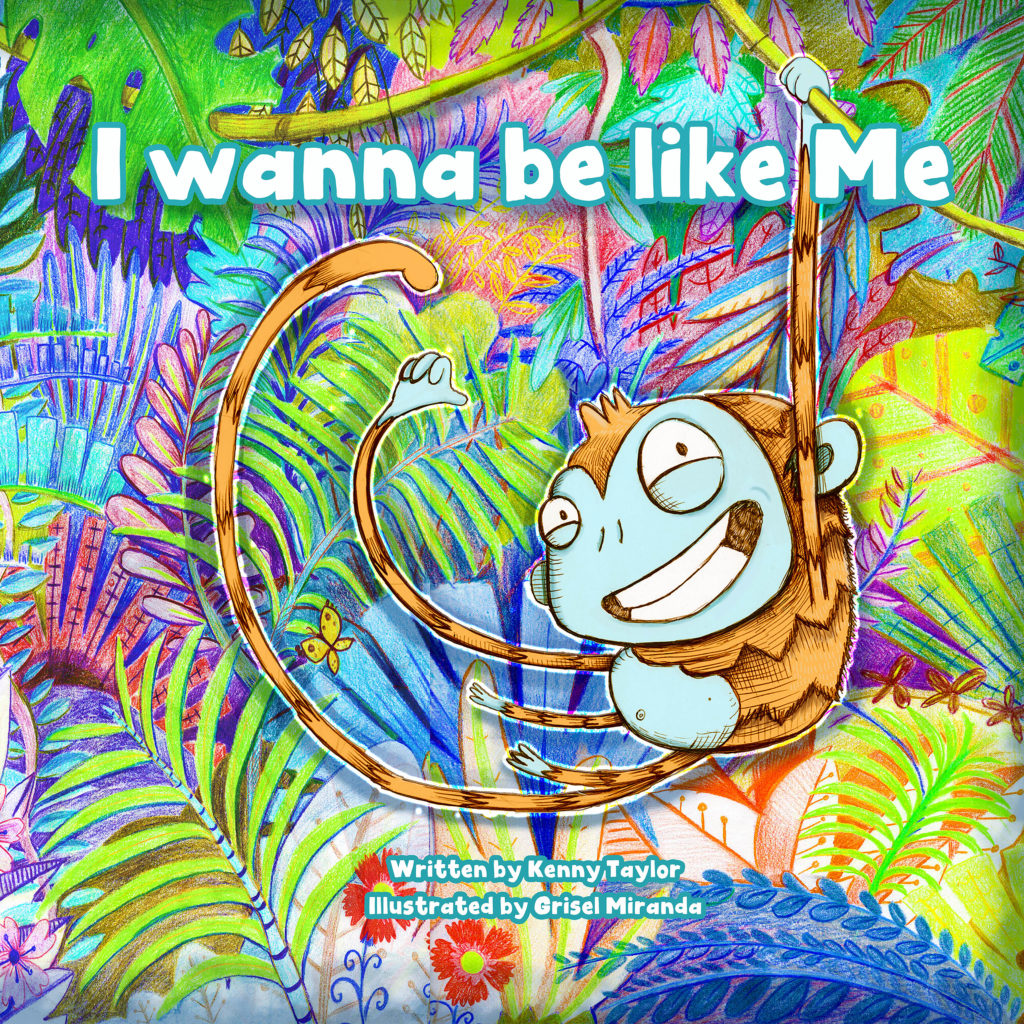 I Wanna Be Like Me
I Wanna Be Like Me
By Kenny Taylor
Published by Sparsile Books
But if your children prefer cheeky monkeys, then this super fun, silly story about a bored little monkey who is having a identity crisis is a perfect present. As the monkey’s ever-patient mother listens to her fantasies, in the end, she makes her see – and celebrate – who she really is.
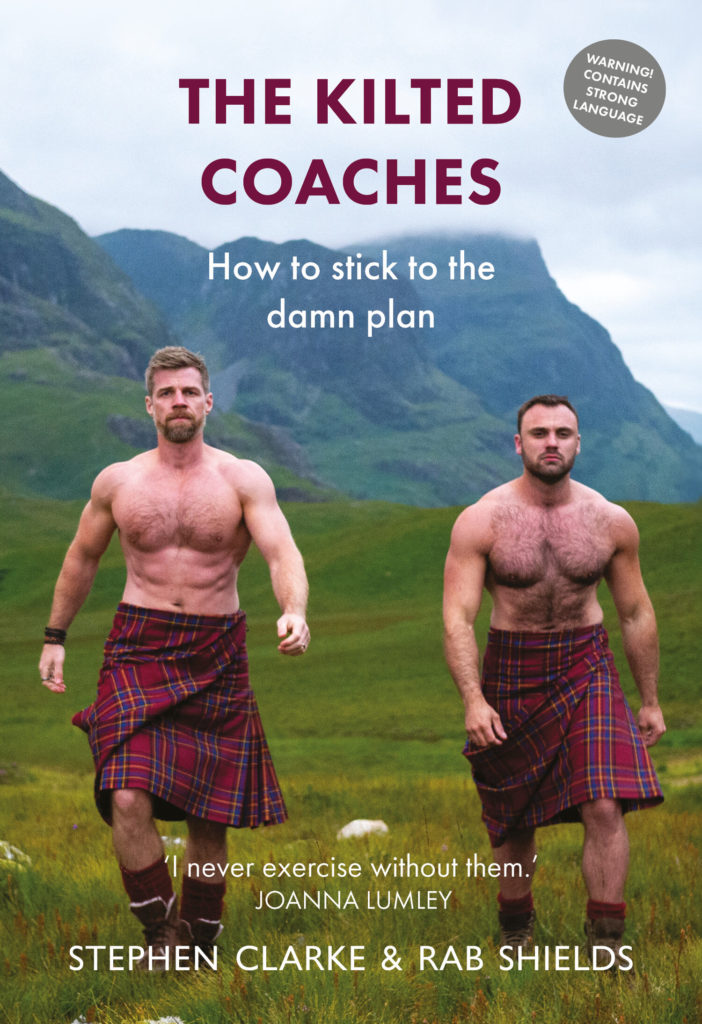 The Kilted Coaches: How to Stick to the Damn Plan
The Kilted Coaches: How to Stick to the Damn Plan
By Stephen Clarke and Rab Shields
Published by Luath Press
Then, for us all who have over indulged, The Kilted Coaches are here for us, channeling their years of experience as life coaches and weight loss experts into bite-sized nuggets of advice designed to build fitness, confidence and positivity that will promote health and happiness.
Angela Hughes’s first book tells us of priceless gifts. My Heart’s Content is a deeply moving memoir, and here, for BooksfromScotland, she tells us of her story.
My Heart’s Content
By Angela Hughes
Published by Liminal Ink
It’s here again, that bells a-jingling, chestnuts a-roasting, snow a-falling, consumers a-spending, debts a-rising time of year. And I love it. Always have. Not the full on, shop-til-you-drop approach, but that feeling of optimism, of togetherness. Of peace and goodwill to all. The Dickens’ effect, or in my case the muppets’ interpretation of Dickens.
As a child Christmas was Top-of-the-Pops, new pyjamas, an array of grandparents, selection boxes and party games. Sleep became a bargaining tool, carrots reindeer fodder and tangerines appeared in the toe of my dad’s work socks. And then there were books, filled with worlds in which to lose myself. Books with chickens and skies that fell in; books with witches and wardrobes, with dogs called Timmy and girls called George. Stories of soft rains and the death of a butterfly that changed the trajectory of the world. Moors and doublespeak and Beat poets and …
In later years Christmas brought an awareness of those who were alone. Those who were ill, suffering, in despair. It also brought It’s a Wonderful Life and the idea of reflection and reconciliation, of personal transformation. All of which came into sharp focus in early December 2013, when I was listed for an emergency heart transplant.
In a reverse Grinch moment, I was told my existing heart was three times larger than it should be. For seventeen days I occupied the liminal space between life and death. In a weird twist I felt better than I had in years. Hooked to a drip to support my heart function, I was surrounded by medical staff who were never more than several seconds away from my bedside, should anything untoward happen. There were mornings when I would wake and for a moment forget that the only way for me to walk out of the hospital doors would be if a donor were found. In time. Someone with the same blood and tissue type as mine. Of a similar height and weight.
The stark reality: for me to live, someone else must die. And though I understood the two events were in no way related, how could I hope for life when the only circumstances in which that were possible involved the death of another?
At any other time of my life, including my numerous previous stays in hospital, I would reach for a book or a pen. Read or write. Neither was possible. The drugs brought uncontrollable trembling and concentration eluded me.
Instead my mind meandered beyond my hospital room. I imagined the reflections from fairy lights agitating the feet of last minute shoppers. Friends trading stories, fingers curled round glasses of wine. My family, together for Christmas, laughing despite themselves. They had wanted to come to the hospital. My refusal brought sadness, and a sense of relief.
Only Paul, my husband, would be with me.
The call came just before midnight on Christmas Eve. An offer, that’s how they referred to it. ‘You’ve got a wee offer,’ the nurse who woke me said. And I smiled and fell back to sleep.
On Christmas morning, after the blood tests and skin scrubbing, and before I signed my consent form with the word MORTALITY, capitalised and underlined, I opened presents with Paul. Among them, books. The gift of Patti Smith’s New York; a wistful summer on the Med. Short stories bound in bright orange from Lydia Davis. Slivers of life expertly captured by John Burnside and Alice Munro. A book of poetry from African poets, foraged from a second-hand book shop. Pages of possibilities. Each a glorious confirmation of another’s belief that my life wasn’t over. That I would be home one day. Gifts that said we know you. We know who you are, what you like. Gifts that said you’re important, you matter, we haven’t forgotten you. We believe. My own George Pratt moment (or George Bailey if you prefer the film version).
During my stay in hospital, one of the nurses leant me a copy of the memoir by Diana Sanders, a heart and lung transplant recipient. It wasn’t an easy read and I often felt the need to hold it away from me, to read it out of the corner of my eye. But its veracity and honesty resonated with me. If she could survive, so could I.
Post-transplant, with renewed clarity and a steadier hand, I wrote My Heart’s Content. It wasn’t the book I had in mind for my debut, nor was it easy to write. I was compelled. It felt urgent. Immediate. I wrote to make sense of what had happened. To raise awareness. An affirmation: this happened.
My original intention was to use my experience in fiction. Yet somewhere along the way, I decided to tell my story. Perhaps it felt too personal to fictionalise. Too difficult to stand back from. Or maybe because memoir seemed the perfect hybrid of fact and fiction; the ‘based on a true story’ narrative. As accurate a retelling as any can be after the fact. It’s something I’ve considered a lot recently, particularly since reading the brilliant Mayflies by Andrew O’Hagan.
Signed by Freight but never published, for a while after, the manuscript lay dormant on my computer, until another set of extraordinary circumstances prompted a discussion with Paul. ‘Let’s set up our own publishing company and put it ourselves’, he said. And so we did.
Of the many messages of encouragement, enthusiasm and positive feedback I’ve received, the one that brought the greatest satisfaction was from a fellow heart transplant recipient, just before Christmas last year. Two words: ‘Nailed it!’
It’s the magic of Christmas. And books.
I believe.
*
Liminal Ink was formed just over a year ago. My Heart’s Content was our first release.
My Heart’s Content by Angela Hughes is published by Liminal Ink, priced
David Robinson discovers revelling in the wonder of the natural world is key to encouraging greater care of our planet as he reads these three excellent books.
The Vanishing Ice: Diaries of a Scottish Snow Hunter
By Iain Cameron
Published by Vertebrate Publishing
Extraction to Extinction: Rethinking Our Relationship with Earth’s Natural Resources
By David Howe
Published by Saraband
Mistletoe Winter
By Roy Dennis
Published by Saraband
The other day, I heard someone say that guilt and shame were the only things that would see us through the next 10,000 years. Maybe that’s true. Without guilt at the polluted planet we’re bequeathing to our descendants, without shame at the speed with which we demolished its resources, maybe human beings don’t either have or deserve a future of hundred years, never mind anything longer.
Even so, I have my doubts. Because finger-wagging and fact-shaming probably won’t make us actually want to save the planet. For that, we need something more: fascination and wonder at the world around us, perhaps, or a passion to discover more about it. And while the three new Scottish books I’ve picked this month might not have all the answers, they at least point in the right direction.
Iain Cameron’s The Vanishing Ice explains his fascination with Scotland’s snow so well (crisply and evenly, I’m tempted to add) that he makes you share it. There’s something so wonderfully quixotic about searching out and recording our longest-lasting snows that intrigues even those of us who have never been anywhere near Garbh Choire Mor on Braeriach in search of Sphinx and Pinnacles – the two most reliable patches of summer and autumn white in what is invariably, in winter, Scotland’s snowiest corrie. Close up, in October or November (at any rate before the first snows of winter) Sphinx and Pinnacles are rather unimpressive to look at: neurotically small, and stained with ptarmigan poo, decayed mosses and grasses. And yet snow-hunting out of season can be a visually magnificent obsession too: who wouldn’t want to look up at the scalloped roof of a Ben Nevis snow tunnel, as exquisite as the ribbed vaulting of a medieval cathedral, shown in Murdo McLeod’s cover picture?
The odds are, of course, that you and I might never see such things. We mightn’t venture inside a snow cave because we don’t really belong that far up Ben Nevis that late in the year and even if we did, we’d worry about its roof crashing down on our heads. We don’t know enough about the Cairngorms to work out where, in the 1930s was the only snow visible every month of the year from a British train station’. And again, if we did, and if we were, like Cameron, up there in the middle of a storm, with winds like being hit by a car, horizontal rain turning into swirling snow and the ever-present risk of rockfalls or 1000-foot tumbles, surely we’d call it a day rather than struggle onwards and upwards to check whether a particular piece of rock had any of last year’s snow on it before it got covered over with this year’s. Wouldn’t we?
In those circumstances, Cameron pushes on. Why? Because, he explains, ‘I had to count every last flurry of snow from the preceding winter before they were buried for another nine months or so’. Had to? Yes, because that’s what a true obsession is. In his case, it’s nothing to do with climbing (he is, apparently, not too good with heights, which to me makes him even more impressive). He wasn’t born halfway up a Scottish mountain, he works in building safety not in the wild outdoors, and when he bought his first book relevant to his new obsession (Scotland’s Winter Mountains by Martin Moran) he was not a geologist, meteorologist or any other kind of ologist but an apprentice Clydeside electrician.
Cameron is, however, both an authoritative and enjoyable guide to the rather niche subject of Scotland’s vanishing snows, whether for anyone set on checking out his map references or those of us armchair chionophiles (snow-lovers) who take them as read. There is an inevitable echo of Christopher Nicholson’s hauntingly elegiac Among The Summer Snows about the topic, although because Cameron’s mission is not fuelled by grief, it is inevitably less introspective. Or rather, there is a kind of grief, but it’s planetary, not personal. He admits that he feels sad when a patch of snow he had expected to find has already melted away: a ridiculous emotion, he realizes. (Or is it?.)
For the purposes of this column, though, I prefer to look instead at what sparked his obsession in the first place: the view north from his parents’ bedroom in the new house they’d just moved into when he was nine, the highest on an estate in Port Glasgow. One May morning in 1983, he looked across the Clyde at what looked like a white cloud or a strange and distant country but turned out to be the snow-covered top of Ben Lomond, Scotland’s most southerly Munro. There’s a photo of it in his book.
It all began there and then, not in a geography lesson at school or with anything he read, but with a sense of wonder. To the bemusement of his parents, he felt compelled to check snowfalls at Scotland’s ski resorts and, though a 13-year-old non-skier, rang the premium-rate phone lines to find out. He still can’t, he says, explain why he’s so fascinated with snow. I think he’s wrong and the book – unshowy, quietly heartfelt – is the proof.
To me, these initial moments of enchantment, when we can see a writer first shaping up to his subject, are fascinating. There’s another fine example in David Howe’s Extraction to Extinction. He was seventeen, standing on Alderley Edge (these days, that plush part of Cheshire where Manchester’s top footballers live) and his teacher asked him to reimagine what everything in front of him was like 250 million years ago, when it was a flood plain on the Tropic of Cancer. They then found some green and blue crystals in a rusty red rock. That’s malachite, the teacher said, pointing. What people used to smelt copper to make bronze – how they made arrowheads, brooches and tools before they’d learnt how to make iron. A seed was sown in his mind: geology became, for the first time, imaginable.
The book opens out into a highly readable study of well or (usually) badly we have made use of the Earth’s rocks and minerals, leavened with the kind of facts you really ought to know by now, such as where to go to see the world’s first concrete block of flats (25 rue Franklin, Paris from 1904) or that King Tut’s dagger was made from a meteorite, or that event just changing all the UK’s cars to electricity would eat up twice the world’s annual production of cobalt. He also has a pithy way with words: climate change, for example, is ‘what happens when we burn millions of years of fossilised sunlight in two lifetimes’. In every way looking beneath the surface, this is a convincing guide to our depleted, overheated planet.
In Mistletoe Winter, a delightful collection of essays that neatly pairs with last year’s Cottongrass Summer, conservation legend Roy Dennis comes up with the ultimate image for our times: mountain hares and ptarmigan, both in their white winter coats and plumage, against our increasingly brown and snow-denuded peaks. This would be, he says, ‘another wake-up call from nature’, but Dennis is growing tired of their repetitiveness: far better, he argues, to remove the vote from anyone over 60 (‘older people have had their chance and failed’) and give it to 14-year-olds.
As he has already outlined in Restoring the Wild earlier this year, Dennis is staging his own rebellion against extinctions by reintroducing lost habitats and reintroducing species that used to live there – projects which started with his attempt to bring back sea eagles to Scotland while he was warden of the Fair Isle Observatory in 1960. These are, he says, hard times for capercaillie and woodcock: maybe the foxes, badgers and pine martens preying on them would have other things to worry about if we could, as he wishes, reintroduce the wolf, lynx and brown bear. And even though the bearded vulture seen flying over the Peak District last summer – and the subject of one of the book’s 35 seasonally divided essays – isn’t native to our shores and never has been, you can practically hear him thinking Yes, but it should be. Wildlife may be in retreat, some species may be reaching the limits of their life on earth, but there’s a radical and invigorating optimism at the heart of Dennis’s work. If we really did heed the call of the wild, he suggests, then not only can threatened species be brought back from the brink, but so can we.
The Vanishing Ice: Diaries of a Scottish Snow Hunter, by Iain Cameron is published by Vertebrate Publishing, priced £20
Extraction to Extinction: Rethinking Our Relationship with Earth’s Natural Resources, by David Howe and Mistletoe Winter, by Roy Dennis, are both published by Saraband, priced £9.99.
Martin Painter has written a memoir of his birding passion, and about what it’s like being a birder in an age of natural decline. Here he shares his thoughts on pursuing this hobby while we tackle climate change.
Birding in an Age of Extinctions
By Martin Painter
Published by Whittles Publishing
Birding and Climate Change
Climate change is a looming reality for all of us and threatens to disrupt our accustomed lifestyles – and those of all living forms – in numerous ways. Birders – like all nature lovers – find themselves in the thick of it. Along with the parallel crisis of biodiversity loss, also caused by human impacts, birders are re-assessing some of their assumptions and practices.
I like to lump birders roughly into two groups – patchwatchers and world listers. The former stick mostly to local haunts and habitats, tracking the lives of resident birds while looking out for the arrivals and departures of familiar migrant visitors and of unfamiliar, rare vagrants. Patchwatchers are the descendants of 19th Century amateur naturalists. Global listers, on the other hand, are more concerned about arrivals and departures at the airport, as they head for distant parts to add to their life lists. World listers are the descendants of 19th Century trappers, shooters and bird skin or egg collectors – it’s all about discovery of the new, accumulation and the thrill of the search.
These two groups are not mutually exclusive – I am a birding member of both. My book, Birding in an Age of Extinctions, describes and reflects on my experiences as both a patchwatcher and a world birder. The impacts of climate change and of biodiversity loss as parallel threats to every kind of natural habitat, everywhere, have come increasingly to preoccupy my thoughts and actions as a birder. This is what I write about in my book
It’s not all bad news. Patchwatchers, wherever their home patch is, are keen observers of these impacts on local bird populations. They record declining numbers, changing migration patterns and new vagrants. Birding has always had a strong association with the conservation movement, right from the beginnings in the late 19th Century of the Audubon Society in the USA and the RSPB in the UK. Perhaps global listers have sometimes forsaken these roots with their obsessions, but recently the advent of eBird, where accumulated on-line birders’ lists assist with the tracking of bird populations, has been a public source of invaluable data points for conservation efforts.
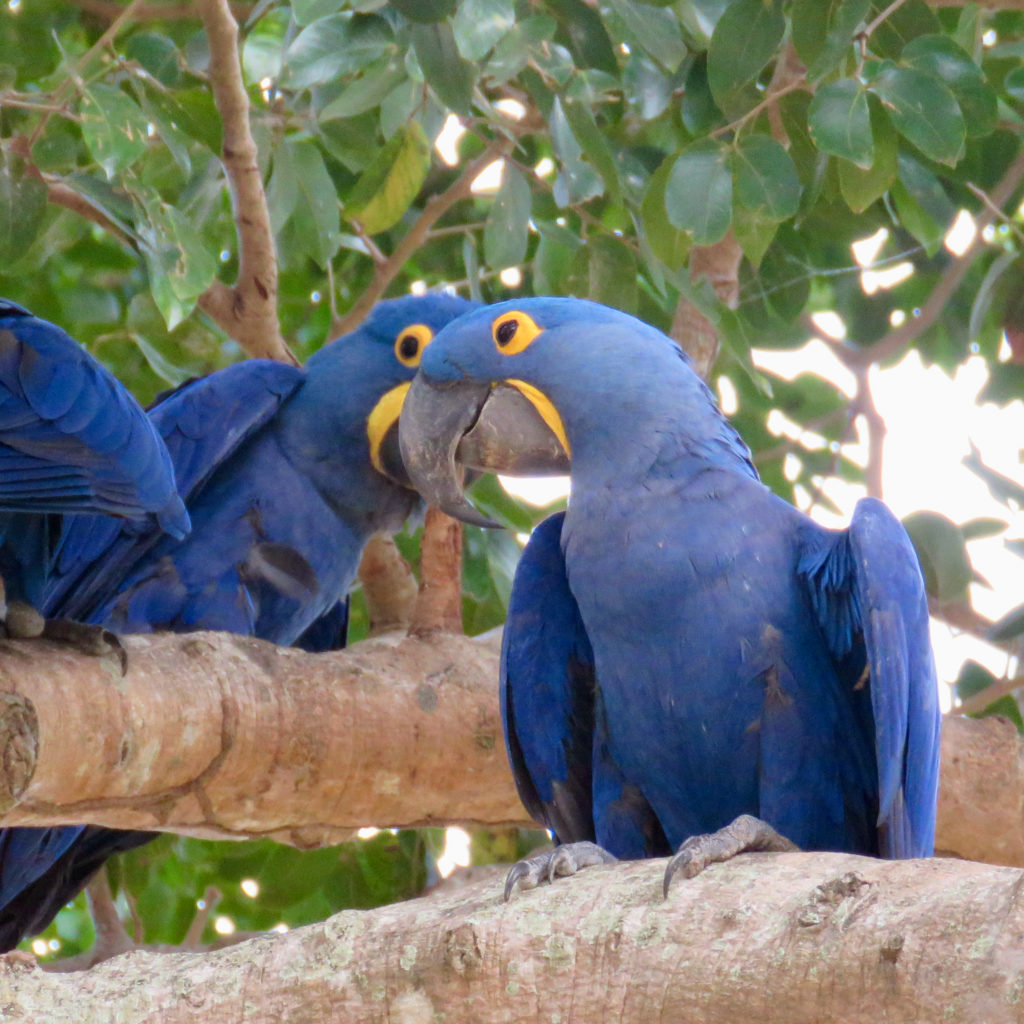
World listers, meanwhile, have prompted an explosion in avian tourism and in the support that this provides for local conservation, particularly in developing countries. I have come across numerous examples of remnant populations of endangered birds that are being protected by local villagers, NGOs and park rangers, in readiness for our visits and for the dollars we bring. Somewhat darkly, I label this ‘extinction birding’ – we get to see vanishingly rare birds in stunning, near-pristine habitats with relative ease, because they are being preserved for our benefit, and a comfortable lodge has been built nearby.
In this way, avian tourism is a bright spot in the litany of recent human impacts on nature. But birders are not always a positive influence. While birding associations and the avian tourism industry are keenly aware of the need to tread carefully when visiting fragile habitats, sometimes the eagerness to get the tick can be over-intrusive. Some of the potential harms are side-effects of our otherwise well-intentioned activities, such as over-use of ‘playback’ and of handfeeding. Perhaps more of these remnant survivors of once abundant bird populations are better left alone in their protected enclaves.
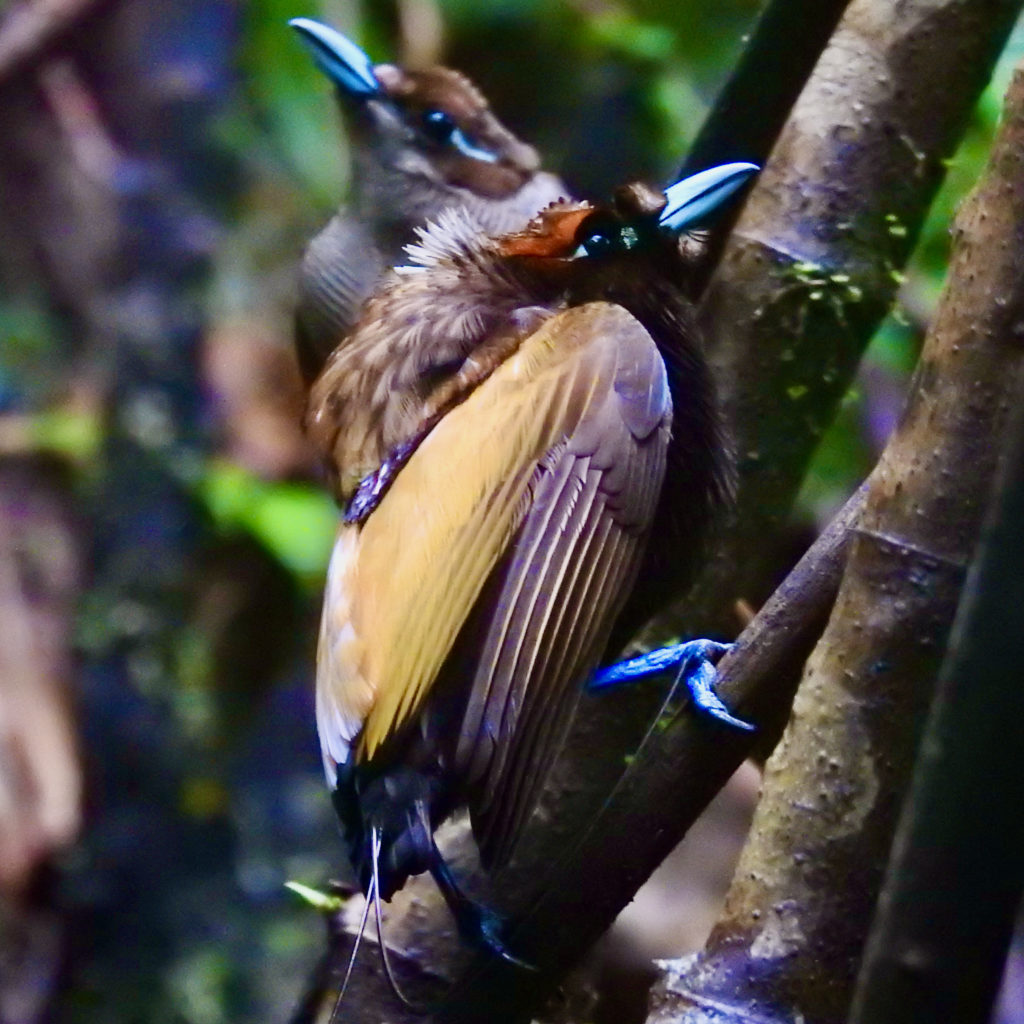
My birding travels afforded me some magical, never-to-be-forgotten birdwatching moments, such as close-ups of dazzling, dancing Birds of Paradise on their New Guinea display grounds, and encounters in the Himalayan foothills with strutting Tragopans, their startling plumage and their haunting dawn calls. The travels in themselves were exciting, occasionally scary. I experienced not only the thrill of the quest, but also the wonder of exploring some off-track, unknown forest patches, as if I were a 19th Century explorer and collector.
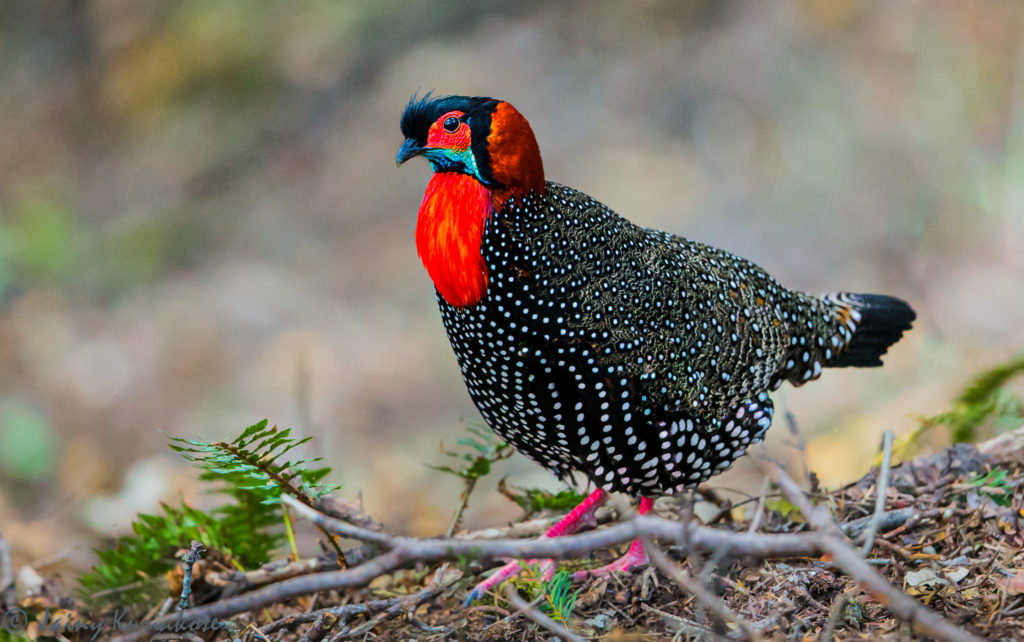
But the realities of 21st Century contacts between humans and nature are very different. Our impacts can be devastating. In an era of rapidly accelerating, human-induced climate change, the elephant in the room for world birders is the carbon footprint they leave from their frequent flyer miles. Since I began birding, my awareness of the potential harm of carbon emissions from global travel has grown. So, I have cut back my ambitions and slowed down my quest for additions to my life list. My travels in one respect were a classic case of the kind of over-consumption that has helped get us to where we are with our impacts on the planet. Had I stuck to my patchwatching, I might feel less troubled.
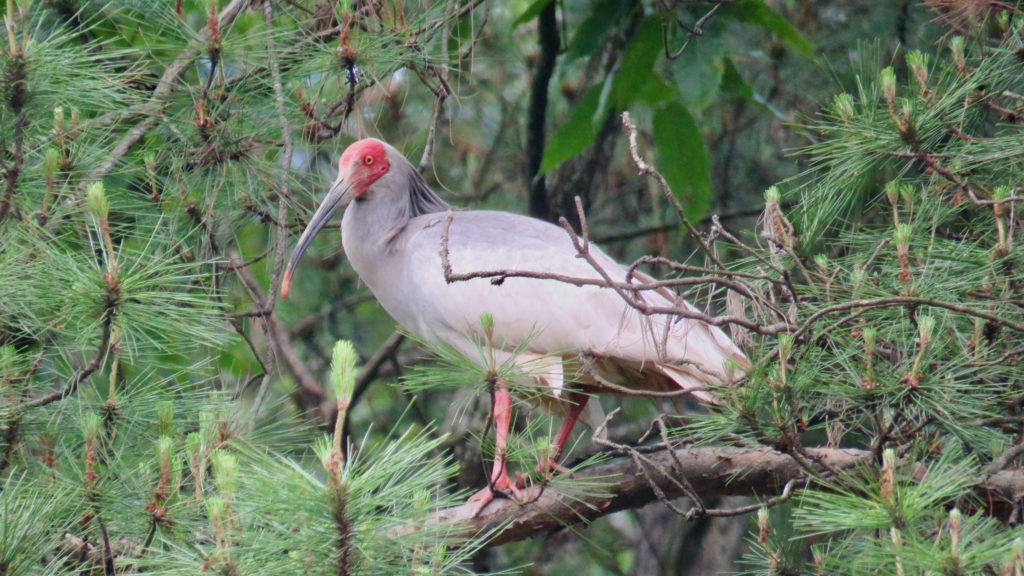
As with most things, moderation is the key, and a sense of responsibility is needed. With these provisos, birders – including world birders – should keep birding. I reflect on days spent on Cambodia’s Northern Plains scattered with ruins of the ancient temples of Angkor, in remote villages reached with the help of a local bird tour company. We are being hosted and guided by local villagers, who are protecting the rare, critically endangered birdlife (such as majestic Giant Ibis, and spectacular Red-headed Vultures). The bird tour company has devoted much of its revenue to educating the local people on how to look after the birds and helping them set up the modest local tourist infrastructure from which they make money. Without both their efforts and my birder’s thirst for encounters with the wonders of nature, birdlife would be even more diminished.
Birding in an Age of Extinctions by Martin Painter is published by Whittles Publishing, priced £18.99.
Clifton Bain’s latest book is not only a guide to the most scenic peatlands in the country, but celebrates the conservation efforts for this vital and beautiful habitat.
Extracts from The Peatlands of Britain and Ireland
By Clifton Bain
Published by Sandstone Press
Often described as the Cinderella habitat, peatlands have long been considered worthless, even malevolent, or simply a resource to exploit. Yet they are immensely important to our well-being and can display great beauty. These enchanting, saturated, watery landscapes can at first appear rather muted, with wide vistas displaying only pastel shades of browns and greens, but closer inspection reveals a wealth of colour and pattern, rich in the spectacle and sounds of unusual wildlife. This natural state of a peatland contrasts with the blackened, bare, eroding expanses that have been damaged in an often-failed attempt to make peatlands profitable. Our shocking treatment of this wonderful part of our natural environment not only threatens wildlife but has left a legacy of degradation that now imposes great cost on society as we lose the natural benefit of peatlands.
Peatlands are characterised by waterlogged conditions that restrict decay and allow dead plant material to build up over time as peat. Blanketing our mountain tops and engulfing low-lying land, peat is one of our most abundant soils, not surprisingly in such a persistently wet country. Peatlands also pervade our culture, from the drama of Wuthering Heights and Sherlock Holmes’s canine mystery on Dartmoor to the aromatic basis for whisky and the modern use of peat in gardens. Widely known, but now practised by few, is the craft of turf cutting to provide fuel in remote rural areas.
Going back over millennia, the association of people with peatlands has been uniquely captured by their excellent preserving qualities that have allowed us to come face to face with the actual bodies of our ancestors as well as incredible cultural artefacts. One of my earliest associations with peat was from my father’s bookcase in the form of a small paperback book, The Bog People by P. V. Glob, with its captivating cover of the perfectly preserved Tollund Man who had lived over 2,000 years ago. The serene, calm face belied the fact that this individual had been hanged and placed in the bog as part of an Iron Age ritual.
The peatland story is one of contradictions. Often disregarded as wasteland, peatlands are immensely valuable. Visions of dangerous, boggy swamps with their derogatory associations contrast with the reality of colourful carpets of mosses bejewelled by clear pools of water and hemmed with delicate, white cotton-grass heads.
Over the centuries, the draining and clearing of our peatlands has been one of the most extensive acts of environmental destruction ever imposed on this country. Worldwide, the situation is just as desperate in many other hotspots of human population, where extensive peatlands in Europe, America and South East Asia have been drained and exploited. Global news coverage has shown the human suffering resulting from huge fires on drained peatlands in Indonesia and Russia extending over thousands of kilometres. The economic damage from these fires was estimated at several billion US dollars.
We are now beginning to understand the full costly consequences to society of our peatland legacy. Global leaders herald their importance and action is being taken to conserve them. Huge projects are underway to repair damaged peatlands and reinstate their watery conditions, to allow wildlife to thrive and help secure the benefits we can all derive from them.
With awareness of their international conservation importance there has been considerable investment by governments and environmental charities to provide protected sites with excellent visitor facilities, offering the opportunity to get into the heart of these wildlife treasuries.
*
Peatlands’ true benefits
In our enlightened times, peatlands are seen as beneficial to society in their natural state, and we understand the costly consequences of past exploitation. Protecting peatlands from damaging development is not only preserving the past but also offering a positive future as a place to celebrate the uniqueness of rich wildlife and uninterrupted space. One of their main long-term rewards is in their natural ability to inspire, rejuvenate and re-energise people, just as they did for the ancient saints in Ireland. Across Europe, the opportunity to escape modern stresses and experience such an uplifting environment is becoming more and more challenging. With the world waking up to the importance of our peatlands, switching from exploitation to helping people enjoy the natural experience while conserving peatlands must surely be the right way to treat the goose that lays the golden eggs.
With climate change now a global priority, the role of peatlands and their behaviour as long-term carbon reservoirs has been increasingly scrutinised in recent years. There has long been a popular misconception that peatlands are damaging because they release methane, a potent greenhouse gas that contributes to climate change. However, we now understand that peatlands are a huge asset in storing vast amounts of carbon and locking it up on millennial timescales. Methane is produced deep in the peat as a byproduct of decay by bacteria that live in low-oxygen, waterlogged situations. In a healthy mire this methane is broken down by other bacteria in the oxygen-rich acrotelm before it can escape into the atmosphere. In damaged peatlands methane emissions may be reduced as oxygen penetrates the drying out peat, but there will be continued release from waterlogged drain-bottoms and peat cracks.
Flammable methane is often thought to be the source of the eerie lights referred to in folklore as ‘will-o’-the-wisp’, ‘fairy lights’, or ‘spunkie’ in the Scottish Highlands, though it may actually be another much less common gas based on the more reactive element phosphorus that is the true source. The names for these lights nevertheless all refer to some form of evil spirit holding a flaming torch or candle that draws travellers to their doom into the dangerous bog or fen.
Since methane forms in wet conditions, the draining of peatlands was thought to be a solution to halt the greenhouse gas emission. We now know that drainage results is a far greater problem through causing the release of large quantities of carbon dioxide as oxygen enters the system and allows aerobic decay of the peat. The loss of carbon dioxide in a drained bog far outweighs any reduction in methane loss and becomes a significant climate change problem.
Across the UK it is estimated that damaged peatlands release around twenty-three million tonnes of carbon dioxide annually – equivalent to over half of all the country’s annual greenhouse gas reduction achievements in recent years. In other words, it negates half of all the climate change efforts made in industry and households every year. With over three billion tonnes of carbon stored in peat deposits, we face serious consequences if peatlands are left in a deteriorating state. International climate change policy now recognises the importance of these natural carbon stores and encourages both protection and restoration to re-wet and rehabilitate the peatlands. In future, farmers could well be paid to maintain these carbon stores on behalf of the nation.
The Peatlands of Britain and Ireland by Clifton Bain published by Sandstone Press, priced £24.99.
Joan Eardley’s art was greatly inspired by the places dear to her. The latest book to celebrate her work focusses on the landscapes of Catterline, where she lived until the end of her life. Here, Patrick Elliott pays tribute to the spirit behind her work.
Joan Eardley: Land & Sea – A Life in Catterline
By Patrick Elliott
Published by the National Galleries of Scotland
The artist Joan Eardley would have been 100 this year, but her life was cut short in 1963, at the age of forty-two. She liked the countryside, but not the wilderness. Sublime Highland peaks and picturesque lochs held no interest for her; she responded instead to downtrodden working environments, particularly places where tight-knit communities held on in the face of modernity. Her favourite haunts, where she made most of her work, were the narrow Victorian streets of Townhead in the centre of Glasgow and the fishing village of Catterline on Scotland’s east coast, just south of Aberdeen – the focus of this book.
Eardley first visited Catterline in 1951, when she toured the area by car. A thriving fishing village in Victorian times, it had been bypassed by the railway and was too small for the bigger fishing boats, so fell into steep decline in the twentieth century. The young left and many of the cottages were abandoned. But the village spoke directly to Eardley’s interest in human resilience; the old and dilapidated were always, she said, more interesting than the new. A friend bought the old custom’s watchhouse for £40 and Eardley stayed there regularly until 1954, when she found a cottage of her own: No.1 South Row. She rented it for £1 a year. It had no electricity, gas or running water, a bare earth floor, no ceiling and hardly any furniture. It suited her perfectly. She eventually bought the cottage in January 1963, unaware of the cancer that would take her life just a few months later.
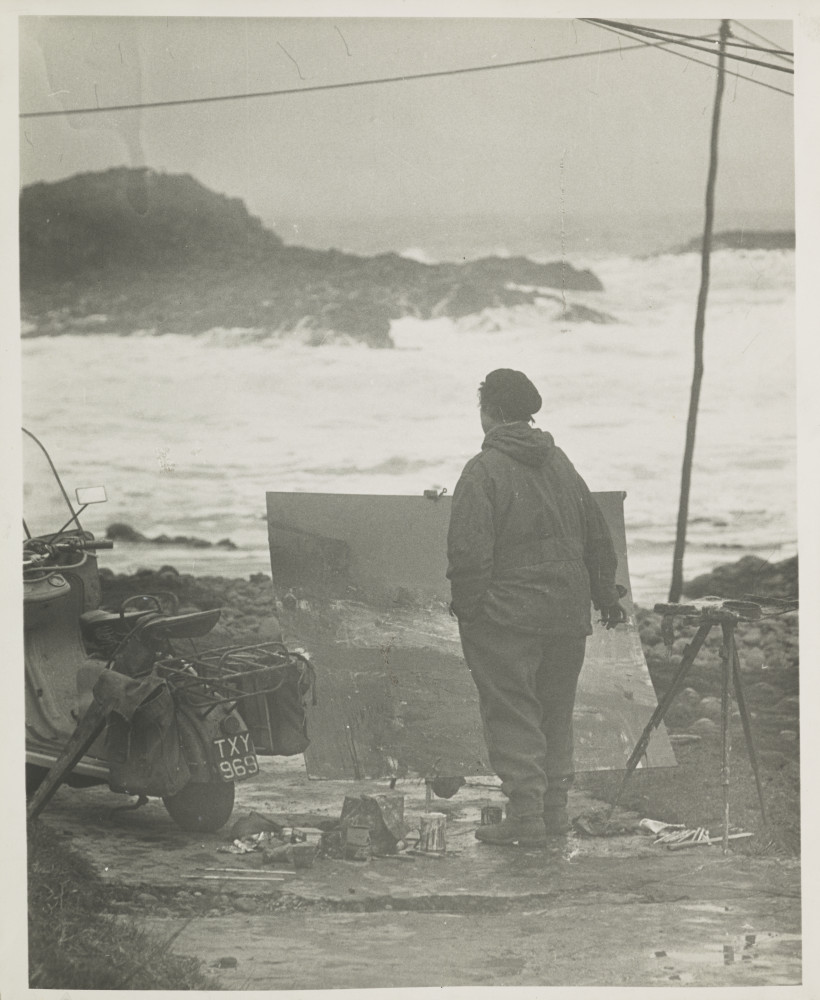
Eardley painting on the Makin Green, Catterline by Audrey Walker Credit line: © Audrey Walker.
Catterline provided her with all the subject matter she needed. The fields right behind the cottage offered an ever-changing source for her landscape paintings. The crops changed each year, from barley to corn, oats to grass – and the weather changed constantly too. Many of her landscapes were painted less than thirty paces from her front door. As she remarked in a letter: ‘It’s a lovely spot as no one comes near and I can always work away undisturbed … But every day and every week it looks a bit different – flowers come and go, and the colour grows – so it seems silly to shift about. I just leave my painting table out there, and my easel and palette.’[1]
Surprisingly, in the first five years she spent in the village, she seldom painted the sea. Rather than look out over the magnificent, crescent-shaped bay, she focussed her attention on the cottages. It was partly because she was used to painting tenement buildings in Glasgow, so she could adopt a similar formula in the village, and partly because she found the sea too difficult to paint at first. For a realist artist, whose training was based on analytical drawing, the churning, restless form of the raging sea must have seemed daunting. She approached it gradually; only in the last few years of her life did it become her central preoccupation. She painted the fields in the summer months and the raging sea in the winter. If she were in Glasgow and heard that gales were brewing in the North Sea, she would head over to Catterline on the train. She worked in all weathers, even using an anchor to moor her easel to the ground. You can still see the tight clamp marks at the edges of many of her sea paintings.
It is often remarked that in Glasgow Eardley painted the street children, and in Catterline she painted the fields and the sea, as if they were entirely different things. In fact, her Catterline paintings, like her Glasgow paintings, are rooted in the community. That was the main point of the book: to show that the village and the villagers were essential to her work. I was lucky to interview a number of people who grew up in Catterline and who remembered her; and chanced upon heaps of unpublished letters which tell of her daily routine – what she read, the music she listened to, village small-talk, long winter evenings sat by the fire. She painted the fields which had been sewn and harvested, the boats and nets which were used by the dwindling number of fishermen. Although she did not paint the people of Catterline, their working materials and their cottages and crops act as analogues for their lives. Stooks of corn and old nets can serve pictorial ends, but, in Eardley’s work, they also speak of resilience in the face of change.
Joan Eardley: Land & Sea – A Life in Catterline by Patrick Elliott is published by the National Galleries of Scotland, priced £24.99
Joan Eardley & Catterline is on display at the Scottish National Gallery of Modern Art (Modern One): Joan Eardley & Catterline | National Galleries of Scotland
[1] Joan Eardley Archive, National Galleries of Scotland Archive, A09/6









